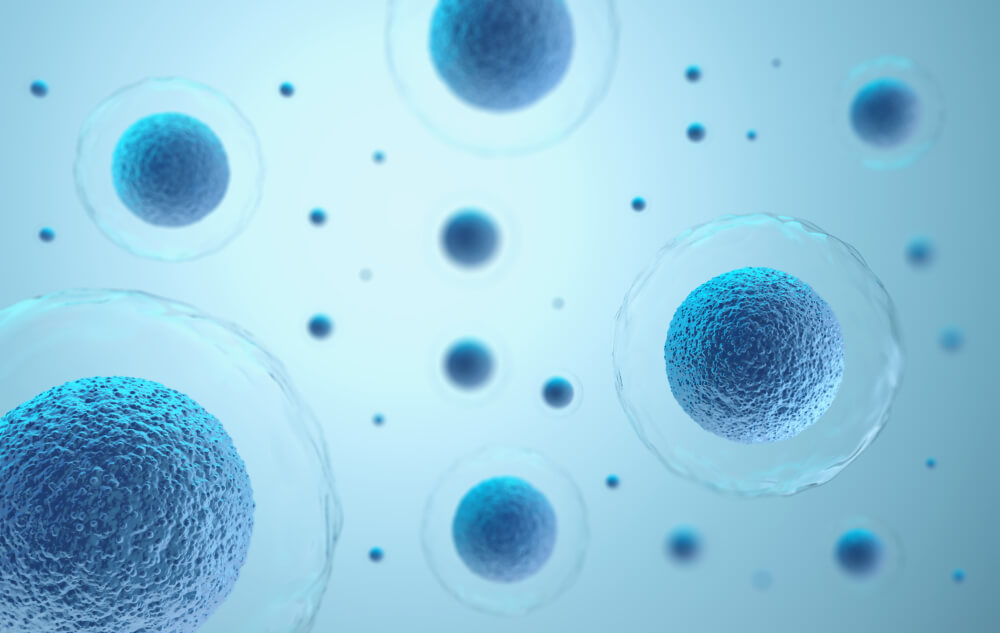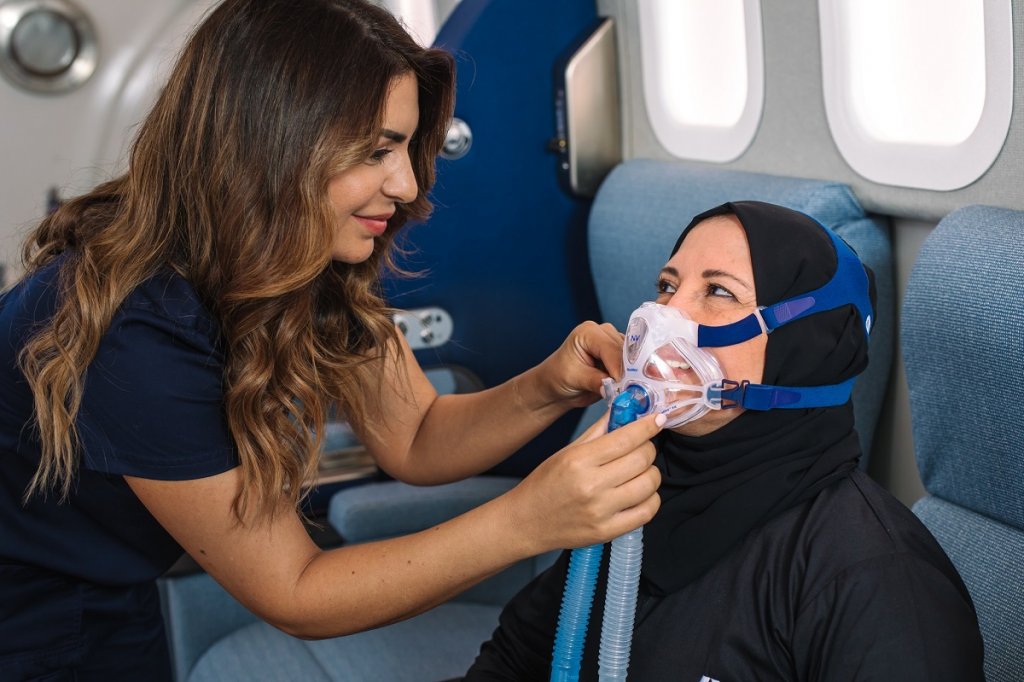How to Increase Your Blood Oxygen Levels: 21 Actionable Tips
Oxygen. It’s the lifeblood of our existence. It’s what helps our bodies function. It’s what helps us move and think, enabling us to achieve our daily goals, both big and small.
For our bodies to function, our cells need energy. Oxygen is the fuel that allows our cells to break down the glucose in our foods to create this energy. Blood vessels transport oxygen-rich red blood cells throughout our bodies, nourishing our tissues and allowing this process of energy production, or cellular respiration, to occur.
As we age, oxygen levels can wane. Blood vessels grow narrower, limiting the transportation of oxygen to red blood cells. This is one reason why we might feel physically and cognitively weaker.
If you’ve been wondering how to increase blood oxygen levels, you’re in luck. At DP World’s Aviv Clinics Dubai, we aim to defy limitations—getting older shouldn’t mean pressing the brake on your life. With the right resources and the benefits of more oxygen in your blood, you can take your foot off the brake and move forward confidently.
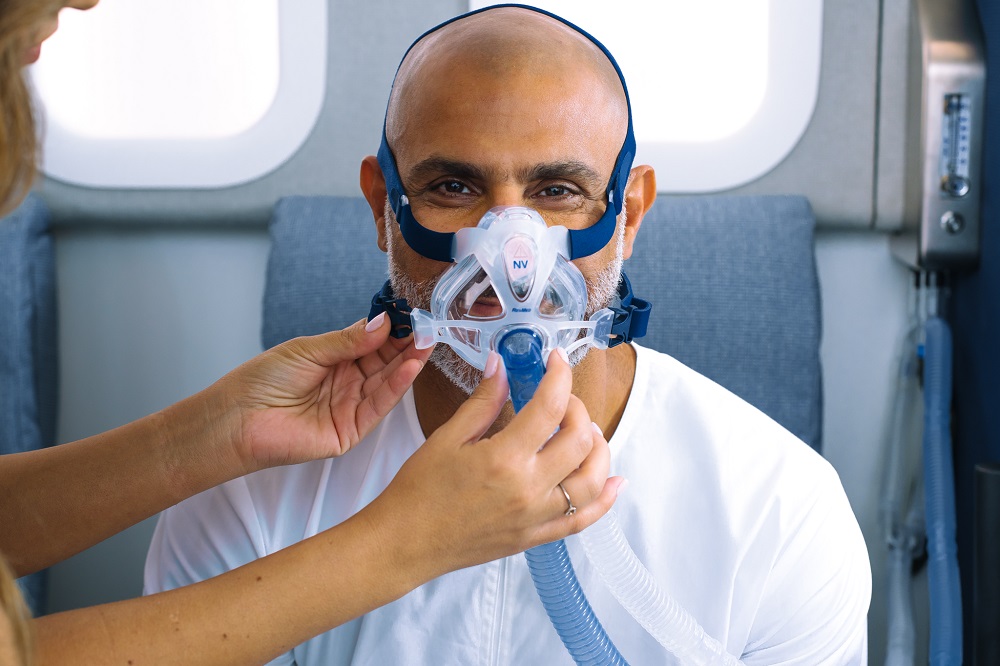
Understanding Blood Oxygen Levels
Your blood oxygen level (also referred to as blood oxygen saturation) is the amount of oxygen you have in your blood. Two main tests are available to measure your blood oxygen level—pulse oximetry and a blood draw test.
- A normal oxygen level using pulse oximetry (a small device often clipped onto your fingertip) is between 95% and 100%.
- For a blood draw, laboratories have different reference ranges and will have details regarding the normal oxygen range. Reach out to your lab or doctor if you have questions.
Low oxygen levels often indicate:
- Heart conditions
- Lung conditions, such as asthma and bronchitis
- Inflammation
- Sleep apnea
- A high-altitude environment
21 Quick and Actionable Tips on How to Increase Oxygen in Blood
Boosting oxygen levels involves these 21 actionable tips, organized by category.

Exercise Regularly
- Cardio: Cardio exercises increase your breathing rate, which helps you absorb more oxygen.
- Stretching: Stretching helps your muscles receive more blood, oxygen, and nutrients.
- Maintain a healthy weight: Excessive weight can strain the respiratory system and reduce lung capacity. Keeping a healthy weight can improve lung function and increase blood oxygen levels.
Maintain a Healthy Diet
What foods increase oxygen in the blood? To enrich your oxygen levels through a healthy diet, you should:
- Consume dark leafy greens: Leafy greens such as kale and spinach increase blood oxygen. They contain nitrogen, which “plays a major role in delivering oxygen throughout the body.”
- Incorporate iron-rich foods: Foods like white beans, tofu, and dark chocolate contain iron—an “essential element for blood production.”
- Snack on antioxidant-rich fruits: Fruits like blueberries and cranberries are high in antioxidants, which promote blood flow and provide more oxygen to tissues.
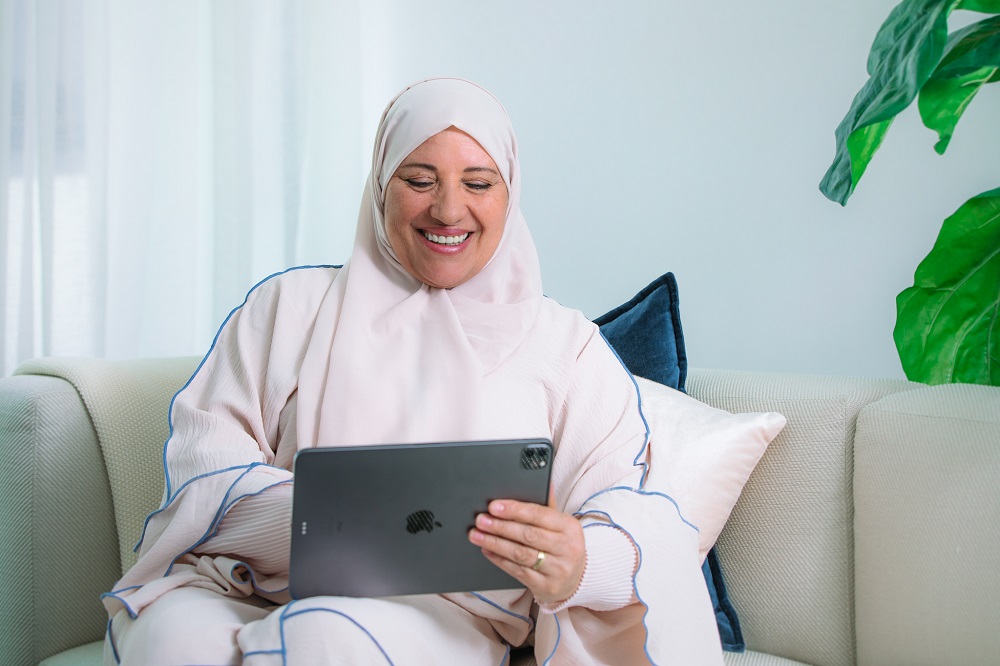
Maintain Good Posture
- Stand or sit up straight: Research notes “the best oxygenation [is] in the ‘sitting upright’ position.” Lying down for a long period can put pressure on your lungs. Take the time to stand or sit up straight to help increase lung capacity.
Keep Your Lungs Healthy
- Drink plenty of water: Well-hydrated lungs are more efficient at dispersing oxygen into your bloodstream. The average daily water intake for “men is about 15.5 cups and for women, about 11.5 cups.”
- Go outside: There’s nothing like a breath of fresh air to promote more oxygen flow. Not to mention, you’ll also get to take in the sunshine and some vitamin D!

Practice Deep Breathing Techniques
- Diaphragmatic breathing: Also called belly breathing, diaphragmatic breathing provides positive oxygenation effects.
- Sit up straight, one hand on your stomach, the other on your chest.
- Breathe slowly through the nostrils. In addition to your chest rising, you should also feel your stomach area expand with each full, diaphragmatic breath.
- Exhale slowly out your mouth.
- Repeat six or more times per minute for up to 15 minutes.
Minimize Exposure to Air Pollutants and Toxins
- Get indoor plants: House plants help remove organic chemicals in the indoor air.
- Set up an air purifier: An air purifier helps trap dust, pollen, and bacteria and disperses clean air back into your home.
- Choose electric over gas: For example, you may opt for an electric stove rather than a gas stove to avert indoor pollution.
- Quit smoking: Smoking has a detrimental effect on oxygen circulation. Make a plan to quit smoking and avoid second-hand smoke.

Improve Sleep Quality
- Stay consistent with your sleep schedule: Being well-rested is vital for maintaining healthy oxygen levels. Get up and go to bed at the same time each night. This consistency reinforces your body’s sleep-wake cycle.
- Limit naps: While sleeping during the day makes up for lost sleep, long naps might make it harder for you to fall asleep at night.
- Stay clear from caffeine: The general rule of thumb is to have a caffeine cut-off time of a “minimum of eight hours before bedtime.”
- Regulate bedroom temperature: An environment that is too hot or too cold is not conducive to good sleep. Keep your bedroom at a cool, but comfortable temperature.
Reduce Stress
- Connect with loved ones: When we feel stressed, our breathing becomes shallow. This inhibits healthy oxygen flow to the bloodstream. Reaching out to trusted friends and family members can help you feel supported and more grounded.
- Take on a hobby: A new hobby such as crocheting, baking, or writing can offer a healthy distraction and put your mind at ease.
- Seek therapy: Therapy offers a safe space to voice and process your concerns and discover healthy coping mechanisms.
The Power of Hyperbaric Oxygen Therapy (HBOT) in Increasing Blood Oxygen Level
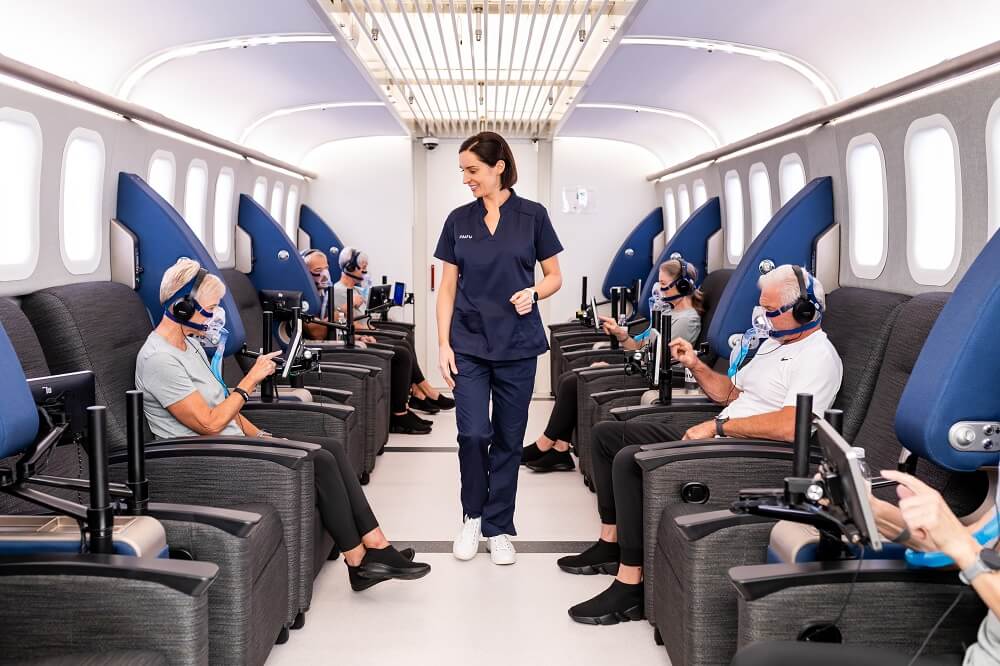
All the above tips are good to implement on a day-to-day basis, but when you feel age-related decline coming on, additional measures might be needed.
Hyperbaric oxygen therapy (HBOT) is a significant way to help increase your blood oxygen levels. HBOT involves sitting in a pressurized chamber and breathing in 100% oxygen. Research has shown that breathing oxygen in a pressurized environment improves circulation and allows more oxygen to be absorbed into the bloodstream.
Aviv Clinics uses a unique, specialized HBOT protocol inside its state-of-the-art hyperbaric suites, which includes precise fluctuations of oxygen levels during each HBOT session.
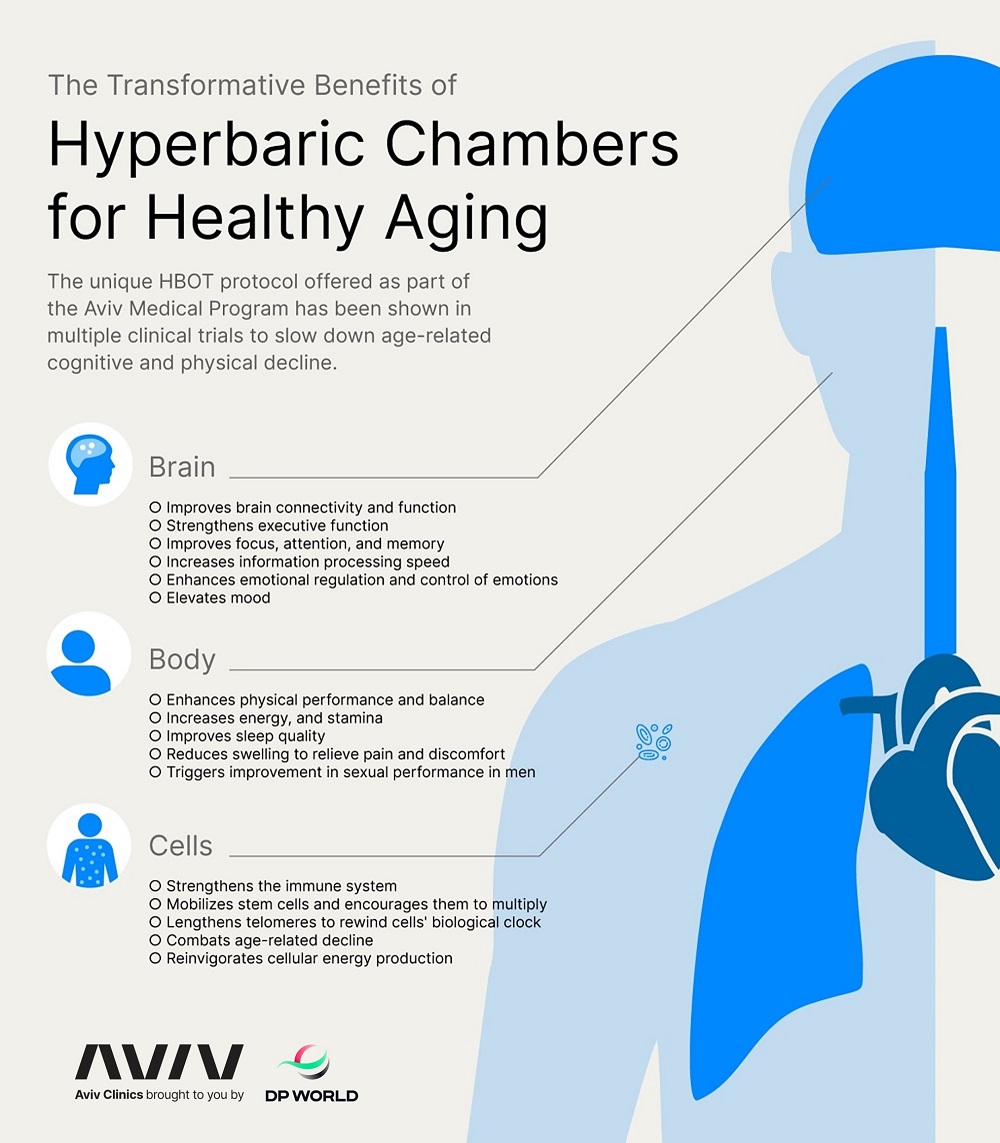
This specific HBOT protocol not only elevates levels of oxygen in the body, but also encourages your body to unlock its self-healing mechanisms.
Thanks to the biological progressions HBOT offers, the Aviv Clinic’s medical team has been able to help patients better manage conditions such as age-related concerns, traumatic brain injuries and stroke.

Take Charge of Your Health and Wellbeing
We encourage you to bookmark this page and practice these tips for increasing your blood oxygen levels and for making positive lifestyle changes.
Explore the Aviv Medical Program for more information on our evidence-based hyperbaric oxygen therapy protocol and comprehensive health assessment or contact us to learn how we can help you take charge of your health and wellbeing.
Stem Cell Therapy vs. Hyperbaric Oxygen Therapy (HBOT)
Change is a natural progression and happens as we age. While we want to stay in control and maintain our well being, time means the capabilities we previously took for granted tend to grow more difficult to achieve.
The transitional time we all experience after retirement age can feel tough, scary, depressing, and isolating. We begin to miss the “good old days” when performing at our peak was easy and rewarding. But please know that there is hope of returning to your glory days.
Science has advanced so much over the past decade and has delivered some promising therapies. Two of them have been gaining notable attention: stem cell therapy and hyperbaric oxygen therapy (HBOT). You may not be very familiar with either one, but they have enhanced human biology over the years.
Aviv Clinics brought to you by DP World, walks you through the key details of each and how they compare.
What Are Stem Cells?
Stem cells are the body’s internal repair system. When our cells go through normal wear and tear, injuries, or diseases, stem cells develop replacements for lost or damaged cells.
The incredible thing is that stem cells are like 3D printers of the body—they can develop into almost any type of cell in the body, from muscle to brain, and can repair and “recreate functional tissues.”
Our body is like a machine. In the beginning, when we are young, our machine works well—we have numerous stem cells. But as we age, the ability to do this starts to decline: Stem cells’ “renewal ability deteriorates and their ability to differentiate into the various cell types is altered.”
“As the amount and potency of stem cells start to decline…we start to lose tissue. This is what we call aging.” – Dr. Shai Efrati, MD, Director of Sagol Center for Hyperbaric Medicine and Research.
Given the powerful abilities of stem cells, researchers have studied them for decades to discover therapies for aging-associated disorders.
Stem Cell Therapy
Stem cell therapy renews damaged organs, tissues, or bodily functions. It’s an invasive therapy that physicians administer through:
- Injecting stem cells into the bloodstream
- Directly injecting healthy stem cells into a specific area of the body (e.g., the knee)
- Engraftment—when transplanted stem cells grow in the body and reproduce healthy blood cells
Uses of Stem Cell Therapy
Stem cell infusions and transplants are used for repairing cells damaged by chemotherapy or certain types of disease. Examples of these conditions include Leukemia and radiation injury.
Because of the“plasticity [and] self-renewal” abilities in stem cells, researchers note stem cell therapy “could delay or even reverse aging.” However, more studies need to be done to discover a specific stem cell treatment for reverse aging.
Limitations and Dangers of Stem Cell Therapy
Though stem cell therapy has made a lot of progress in health and wellness, there are limitations and potential risks to keep in mind:
- First and foremost, quality evidence is limited for the clinical improvements of stem cells therapy for most possible applications on humans.
- Currently, it is not possible to generate stem cells in large quantities. There isn’t a solution available to “generate large quantities of stem cells” in a laboratory. This makes stem cells difficult to obtain and purify.
- Stem cell therapy is limited to certain conditions.
- Stem cells therapy is an invasive procedure and therefore harbors the hazards of any invasive therapy, such as infections and the risk of significant local and system reactions, which could pose a significant health risk to the recipient.
While stem cell therapy has made its presence in Dubai, it is still very much in the research phase, which does limit its use as an effective therapy for age reversal.
Hyperbaric Oxygen Therapy at Aviv Clinics Dubai
Hyperbaric oxygen therapy (HBOT) is a therapy that involves breathing 100% oxygen in a pressurized hyperbaric multi-person suite.
As you age, stem cells “gradually lose their self-renewal and regenerative potential.” But there is a way to naturally increase stem cells in your body for healing and healthy aging without having to inject anything into your body.
Not all hyperbaric oxygen treatments are able to achieve stem cell regeneration. The key is to receive a unique hyperbaric oxygen protocol that involves fluctuating oxygen levels over a set period of time. This process activates the body’s self-healing mechanisms by proliferating stem cells.
Your body is capable of natural rejuvenation. A unique hyperbaric oxygen protocol can help unlock this potential for repair and growth.
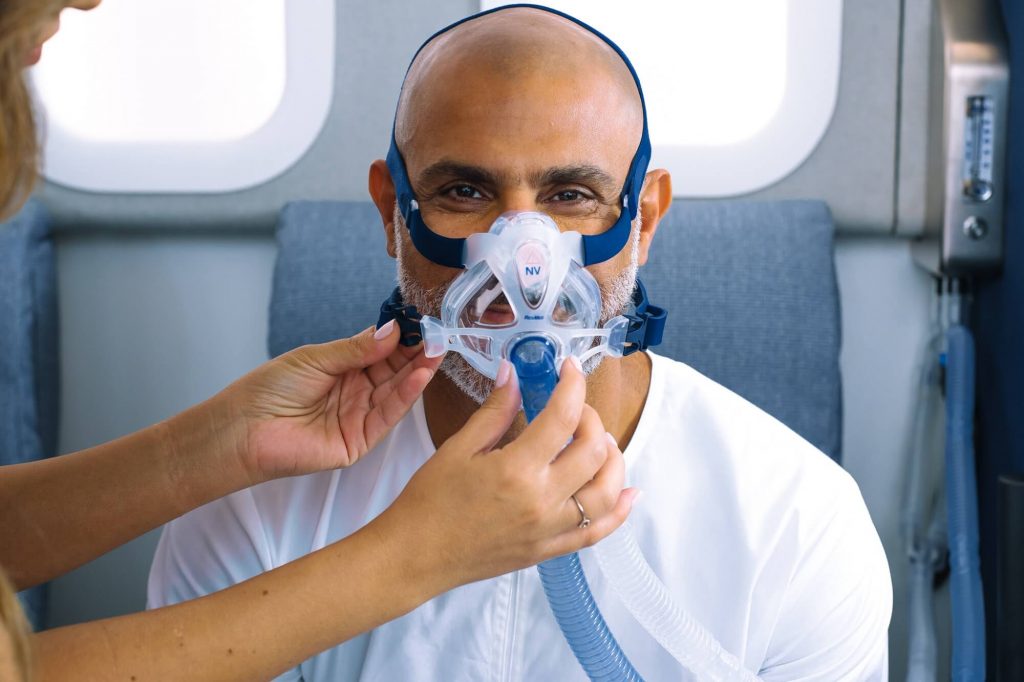
Uses of Hyperbaric Oxygen Therapy
People have historically used hyperbaric oxygen therapy to treat a variety of conditions that involve oxygen-starved tissue. These include:
- Carbon monoxide poisoning
- Delayed radiation injuries
- Wound healing
The promising results of HBOT have prompted many physicians and scientists to dive further into research to identify possible impacts the therapy has on reverse aging and other health areas.
Landmark Research on a Hyperbaric Oxygen Unique Protocol
Founded on decades of research, it’s proven that unique hyperbaric oxygen fluctuations encourage the body to multiply its own stem cells. This specific protocol targets various health and wellness areas, such as:
- Reverse aging: Landmark research shows success using HBOT for reverse aging. Now, many doctors refer to HBOT as the scientific “Holy Grail.” The therapy has helped many individuals improve their cognitive and physical performance.
- Post-stroke rehabilitation: HBOT helps restore function of injured brain tissue in survivors.
- Traumatic brain injuries (TBIs): Studies illustrate HBOT can “induce neuroplasticity”—the brain’s ability to change and adapt. This potential can help repair damaged brain functions for those suffering from challenges after traumatic brain injuries (TBIs).
Limitations and Dangers of HBOT
- Not all HBOT administration is the same across clinics. Some use monoplace oxygen chambers, while others use multiplace chambers. Also, the way oxygen is administered is different across clinics as well. For example, most clinics administer oxygen at a steady level rather than use the oxygen fluctuations required to gain the benefits (based on Nobel-prize winning research).
- HBOT is an elective treatment. HBOT in the context of Healthy Aging is not covered by insurance.
- Potential side effects due to pressure changes may include ear and sinus discomfort. For some chronic conditions, special considerations may be needed.
Why Hyperbaric Oxygen at Aviv Clinics Dubai May Be a Better Alternative to Stem Cell Therapy
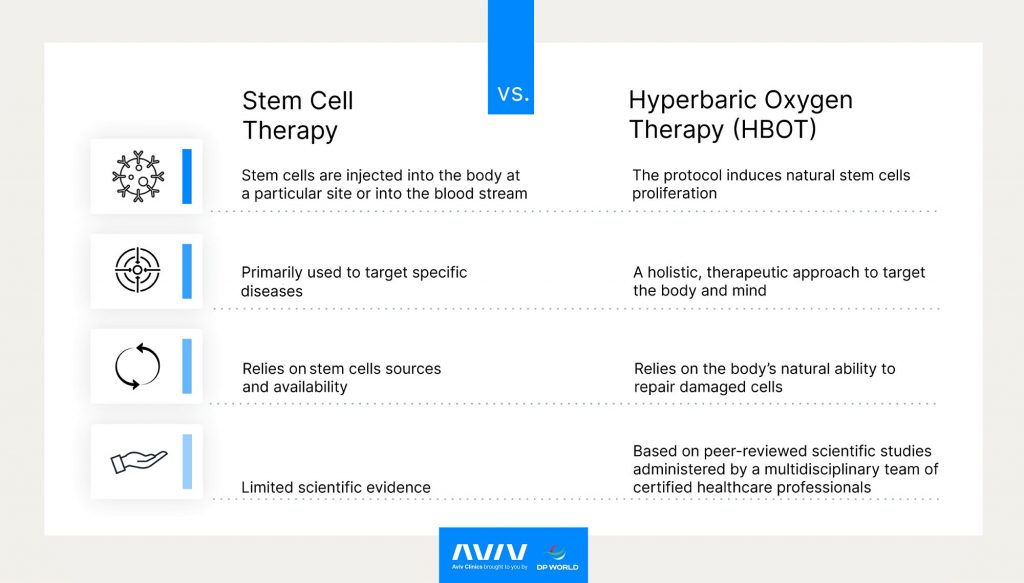
HBOT offers a safer, scientifically backed and a much more reliable approach to improving cognitive and physical performance (reverse aging), post-stroke rehabilitation, and traumatic brain injury.
Stem cell therapy currently does not have enough high quality data to know if it is an effective reverse aging treatment.
While stem cell therapy is invasive (injecting cells into your body), HBOT is non-invasive, which means that there is no risk of acquiring infections or other side effects associated with invasive procedures. Individuals breathe in 100% oxygen, usually through a mask, and HBOT triggers the proliferation of your own stem cells.
The natural approach HBOT takes is why so many people have been able to experience long-term, systemic improvements throughout the entire human body. HBOT targets both the brain and body to improve the aging process and quality of life.
To explain further:
- Stem cell therapy is an invasive therapy (stem cells are injected into the body). HBOT is non-invasive. Aviv’s HBOT process is administered via an oxygen mask in a first class multi-person suite, and the oxygen fluctuations trigger the body’s ability to naturally proliferate its own stem cells.
- Aviv’s HBOT protocol is founded on decades of research and offers a holistic therapeutic approach to target the brain and body, enhancing overall human performance and aging. As far as stem cell therapy is concerned, high quality data is still not sufficient to fully understand the relevance of this treatment.
- While the success of stem cell therapy relies on stem cell sources and availability, HBOT at Aviv relies on the body’s natural ability to repair damaged cells. This offers a safer and more reliable option to boost performance and limit aging in the long run.
- HBOT at Aviv is based on peer-reviewed scientific studies.
Learn more about the science of hyperbaric oxygen therapy
The Aviv Medical Program’s Hyperbaric Oxygen Protocol
The Aviv Medical Program in Dubai includes HBOT to boost the body’s self-healing abilities. Our unique and safe HBOT protocol involves fluctuating oxygen levels to trigger stem cell proliferation.
Here’s how Aviv’s HBOT process works:
- In the oxygen chamber suite, clients put on a mask and breath in pure oxygen. The suite is pressurized above atmospheric levels, increasing oxygen levels up to 10 times higher than normal.
- Health professionals fluctuate oxygen levels during the session. These fluctuations trigger stem cells to multiply and new blood vessels and neurons to develop.
- In addition to HBOT, clients may undergo cognitive, physical, and nutritional training. This drives your body’s natural healing and regeneration process.
- A multidisciplinary team delivers the full Aviv Medical Program, not only the HBOT protocol.
While other clinics typically focus on injecting the body with stem cells, Aviv’s unique protocol fuels the body to reproduce stem cells organically.
Our program is founded on decades of research — data that has helped our clients achieve a higher quality of life.
Schedule a Tour to Learn More About Aviv Clinics
The unique HBOT protocol at Aviv Clinics is founded on decades of research. If you’re looking to reverse your biological age and naturally reproduce your body’s stem cells, the Dubai team is on your side.
Schedule a tour of the Aviv Clinic in Dubai to satisfy your curiosity about how hyperbaric oxygen therapy can benefit you!
How New Fibromyalgia Treatment Options Can Improve Quality of Life
Fibromyalgia is a very real condition, though it’s not uncommon for people who have it to experience misdiagnosis, feel misunderstood by their care providers, or receive ineffective treatment. This experience can be incredibly frustrating for those seeking relief from their symptoms.
Fortunately, new research offers access to revolutionary treatments that can better address fibromyalgia symptoms. Despite what some doctors believe, studies confirm that the experience of fibromyalgia patients is not “just in their heads.”
Now, new fibromyalgia treatment options can take a more targeted, holistic path.
What Is Fibromyalgia?
Fibromyalgia is a persistent, chronic pain disorder characterized by widespread musculoskeletal pain, sleep disturbances, fatigue, and impacts on cognitive function. There’s no singular cause of this condition. However, research indicates it is often “triggered or aggravated by multiple physical and/or emotional stressors,” including:
- Viral infection
- Traumatic brain injury (TBI)
- History of severe emotional stress
- Ongoing severe emotional stress
- Traumatic events
Despite its prevalence, finding a physician who truly understands the condition and can take proper measures to help you find relief can be exasperating and exhausting.

Traditional Treatments for Fibromyalgia
When managing fibromyalgia symptoms, the following treatment options are typically the first course of action to help people take control of their well-being. The treatments outlined are proactive and reactive measures that may provide some relief for fibromyalgia symptoms.
Lifestyle Changes
Lifestyle modifications may improve some fibromyalgia symptoms. These modifications can reduce the impact of symptoms like fatigue, low energy, poor sleep quality, and mood. Lifestyle changes often include establishing and practicing good sleep routines and eating a well-balanced diet.
Physical Therapy
Individuals living with fibromyalgia may experience chronic discomfort and ongoing, widespread pain. These symptoms can contribute to stiffness, soreness, and tension, among other bodily issues. Physical therapy can help reduce pain, using customized exercise programs to improve flexibility, strength, and endurance. Exercise can increase mobility and enhance general feelings of well-being.
Medications
Physicians sometimes prescribe medications to treat pain, improve sleep quality, or help regulate the psychological symptoms involved in the condition. Several medications, both over-the-counter and prescriptions, can play a role in managing fibromyalgia symptoms. Among those commonly used are:
- Pain relievers
- Antidepressants
- Anticonvulsants
Therapy or Counseling
Fibromyalgia brings new challenges that can be difficult to process. Professional emotional support can enhance your emotional well-being and help you cultivate a positive outlook on life, even in the face of chronic symptoms. Working with a compassionate therapist or counselor can go a long way toward developing helpful coping strategies and stress management skills.

New Fibromyalgia Treatments
Traditional treatments can do a lot to relieve day-to-day fibromyalgia symptoms. However, more advanced, comprehensive solutions go beyond addressing the surface-level effects of the condition.
New fibromyalgia treatment solutions go deeper to provide long-lasting relief and empowerment to those dealing with symptoms. These therapies look at the underlying mechanisms associated with how the condition manifests.
Stress Management Activities
Recent research has shown that the condition has a psychiatric element and that exposure to psychosocial stressors may “contribute to dysfunctional pain processing.” Because abnormal pain perception can be exacerbated by stress, the following Stress management strategies like the following can be powerful ways to address fibromyalgia symptoms:
- Meditation
- Deep breathing
- Enjoyable hobbies
- Massage
- Yoga and tai chi
It’s critical to note that people can have a range of experiences with stress. In one study, 75% of participants engaging in a mindfulness-based stress reduction (MBSR) practice reported “experiencing a reduction in symptom severity.” In other studies, there’s “no evidence that mindfulness had an effect on other variables, such as positive mood, attention, sleep.”
Hyperbaric Oxygen Therapy (HBOT)
Another new treatment for fibromyalgia has promising results, as published in peer-reviewed studies. These trials indicate that a unique, evidence-based hyperbaric oxygen therapy (HBOT) protocol (involving breathing fluctuating levels of pure oxygen in a pressurized chamber) can increase oxygen levels in the body’s tissues and trigger the body’s natural self-healing mechanisms.
The HBOT process helps promote tissue healing, reduce inflammation, and enhance brain and body performance. This treatment provides the following support:
- Less fatigue
- Reduced brain fob
- Decreased pain
- Boosted energy level
- Improved cognitive function
- Increased brain connectivity
- Improved sleep quality
Restoring Hope with a Groundbreaking Fibromyalgia Treatment at DP World’s Aviv Clinics Dubai
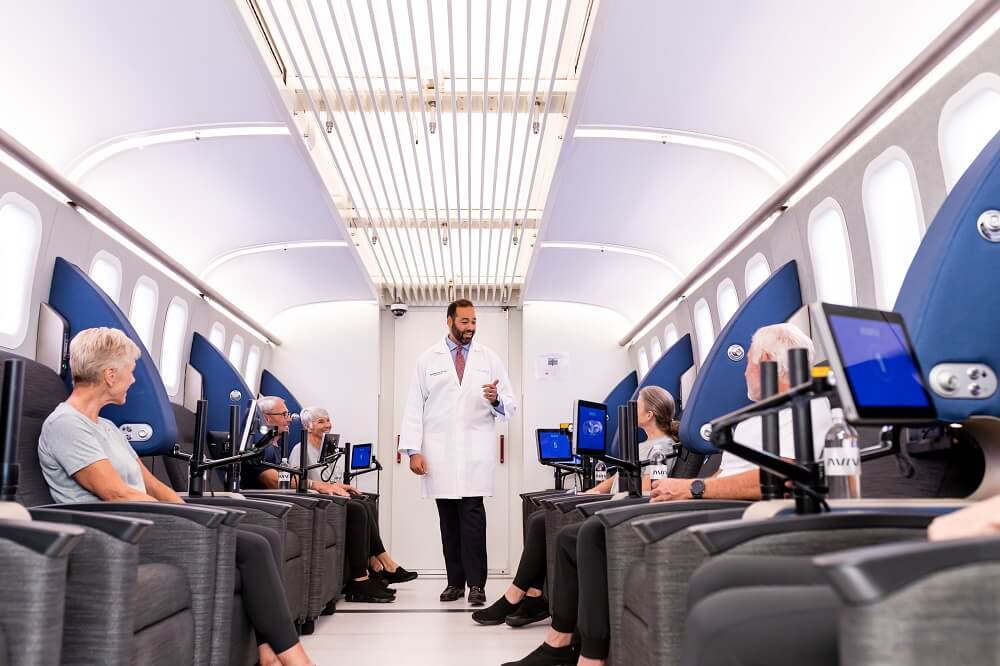
HBOT treatment is non-invasive, targeting the regions of the brain and body responsible for pain sensation and tolerance to enhance feelings of well-being.
The HBOT protocol used in the aforementioned studies is the same protocol employed in the state-of-the-art hyperbaric suites at Aviv Clinics. For Patty, this solution was life-changing.
“By halfway through, I didn’t have the pain or the aches anymore…I didn’t feel like I had the fatigue. I had so much energy. I have a clear brain now… I just feel like I have a whole new brain.” — Patty, Aviv Clinics Fibromyalgia patient
Watch Patti’s Story: Healing from Fibromyalgia
Future Outlook and Potential Impact on Fibromyalgia Patients
As new fibromyalgia treatment options continue to offer a greater understanding of the condition and better results, the outlook is increasingly promising. If you’re dealing with the effects of fibromyalgia, there is hope for a reduction in symptoms.
Since fibromyalgia symptoms can vary from person to person, a targeted, personalized program that addresses the underlying mechanisms of the condition is key to more comprehensive, effective management. At Aviv Clinics Dubai, each prospective client receives a personalized treatment program, based on the clients’ individual needs and health concerns, and the results of a comprehensive physical, medical, and cognitive assessment.
The Aviv Medical Program is a holistic treatment plan that can include the following:
- Cognitive training
- Dietary coaching
- Physical performance training
- Hyperbaric oxygen therapy (HBOT)
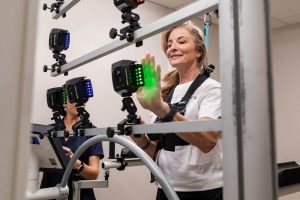
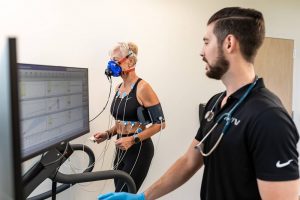
There is renewed hope as we make new strides toward understanding fibromyalgia.
Advancements in medical science have paved the way for new fibromyalgia treatment options designed to alleviate symptoms and empower individuals to reclaim their quality of life. Taking a multi-dimensional approach, the team at Aviv Clinics Dubai improves outcomes for people with fibromyalgia.
We strive to make a significant difference in fibromyalgia symptoms so those living with the condition can experience relief and take charge of their quality of life.
You don’t have to suffer alone, feeling misunderstood and misdiagnosed.
We can help you achieve real relief.
Hyperbaric Oxygen Therapy’s Impact on Stroke Treatment
You deserve to achieve your goals and live a happy and fulfilling life. But when a stroke happens and your life changes, your plans do too… the road to post-stroke recovery can feel impossibly hard.
Rest assured that all is not lost. Aviv Clinics, brought to you by DP World, uses advanced tools and therapies for stroke rehabilitation and research-backed processes that unlock your mind and body’s natural self-healing mechanisms.
Learn all about Aviv’s Medical Program which includes hyperbaric oxygen therapy for stroke patients, so you can regain physical vibrancy and emotional well-being.
“There’s a growing body of medical research that shows hyperbaric medicine can help with the rehabilitation of people suffering from stroke.” – Dr. Zemer Wang, Medical Director of Aviv Clinics.
What Is Hyperbaric Oxygen Therapy?
In hyperbaric oxygen therapy (HBOT), patients breathe 100% pure medical-grade oxygen in a pressurized chamber. Paired with oxygen fluctuations, this process boosts oxygen levels in the body up to 10 times higher than normal and helps unlock the body’s self-healing capabilities.
Who Can Try HBOT for Stroke Relief?
Don’t let the idea that the brain has a limited window for improvement stop you from getting the help you need. Stroke survivors at any stage in their recovery can seek treatment with HBOT and other complementary therapies.
While many HBOT studies were conducted on people who had their stroke incident within a three-year timeframe, Dr. Efrati has seen similar improvement in patients whose brain injuries occurred up to 20 years before.
Please understand that not everyone is a candidate for the Aviv Medical Program. Our rigorous assessment process ensures we select the clients who can benefit from the program. Speak with an Aviv Clinics team member to learn if you’re a candidate for our program.
How Does Aviv’s Unique HBOT Protocol for Stroke Work?
When a stroke occurs, some brain tissue dies while other tissue is damaged. HBOT can help trigger the body to self-repair the damaged brain tissue and improve cognitive function after a stroke.
As part of the Aviv Medical Program, we follow a unique, highly specialized HBOT protocol for stroke that differs from other types of oxygen therapy. We focus on providing a personalized care program aligned with your needs and goals.
Here’s how our process works:
- Aviv uses multiplace oxygen chambers—large treatment suites fitting up to 14 people—rather than small, confining, one-person HBOT chambers.
- Clients breathe 100% pure oxygen through a mask in a pressurized environment. This process increases the blood oxygen concentration to help deliver oxygen to the cells that need it.
- Patients follow a specific Aviv protocol where they breathe 100% oxygen with frequent breaks to breathe normal air, which the body then perceives as the trigger for self regeneration. This repeated fluctuation triggers the body into cell repair and regeneration mode.
Cindy Parsons Finds Hope 4 Years After Her Stroke Incident
For Cindy, simple capabilities like combing her hair, driving, and walking unassisted were suddenly stripped away by a stroke. She had been told not to expect more improvement after six months of recovery. Cindy sought the help of Aviv Clinics, and during her assessment, brain scans indicated brain tissue could still be revived.
Watch Cindy’s remarkable stroke recovery story:
Cindy’s personalized Aviv Medical Program included:
- 60 daily HBOT sessions
- Cognitive training
- Physical, occupational, and speech therapy
- Strength training
- A specialized diet plan
Upon the conclusion of the treatment plan, Cindy can now drive herself, walk without a cane, and talk clearly—activities she thought she would never be able to do again.
Cindy’s post-treatment clinical results show numerous improvements in the following ways:
- Skeletal muscle mass increased.
- Muscular strength improved.
- Fall risk dropped.
- Gait speed and quality improved.
- Nonverbal memory increased.
- Information processing speed climbed.
- Motor planning improved.
“It didn’t take long at Aviv before I was able to get the courage to try things. And now that fear is 95% gone.” Cindy Parsons, stroke survivor and former Aviv Clinics client.
Hyperbaric Oxygen Therapy for Stroke Patients: Clear, Proven Research
Recent clinical studies at The Sagol Center for Hyperbaric Medicine and Research have evaluated the effects of hyperbaric oxygen therapy for stroke patients.
The center’s studies show the powerful potential of HBOT as it:
- Triggers neuroplasticity—when healthy parts of the brain “rewire” to assist injured parts of the brain.
- Encourages neurogenesis—the creation of new nerve cells.
- Creates new blood vessels for higher blood flow and oxygenation of tissue.
- Increases neurocognitive abilities in post-stroke patients.
An Evidence-Based Treatment Protocol
Numerous studies continue to show the unique HBOT protocol—available only at Aviv Clinics—makes significant stroke-recovery improvements in people even years after the stroke event.
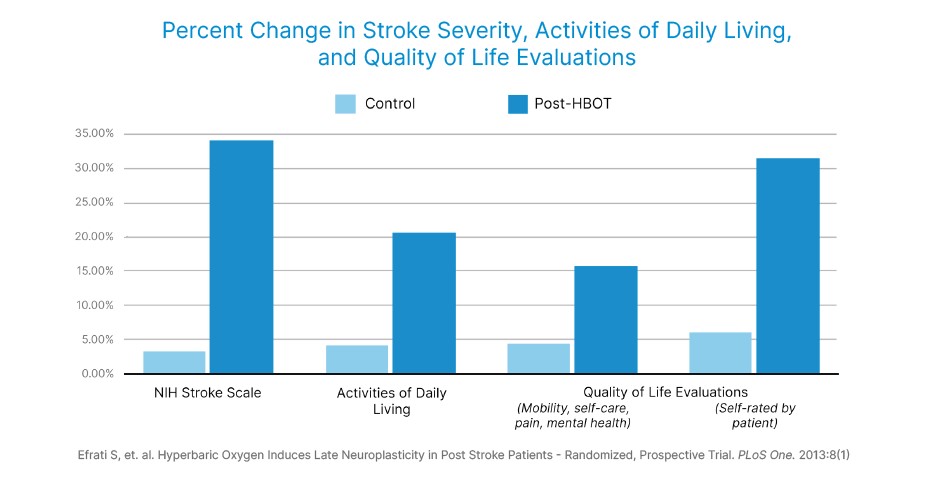
Well let these research findings and case studies speak for themselves:
- “The results indicate that HBOT can lead to significant neurological improvements in post stroke patients even at chronic late stages.” –Dr. Shai Efrati, Founder and Director of The Sagol Center
- “The results illustrate the potential of [HBOT] for improving memory impairments in post-stroke patients, even years after the acute event.” – Dr. Shai Efrati
Watch Keren’s Recovery Story
Upon suffering a stroke, businesswoman and mother Keren Trabelsi sought the help of Aviv. Learn what her program was like and how her brain and body benefited from her personalized health program.
“[The Aviv Medical Program] brings back your ego, it brings back your self-esteem…it changed my life.”
How Can the Aviv Medical Program Help with Stroke Relief?
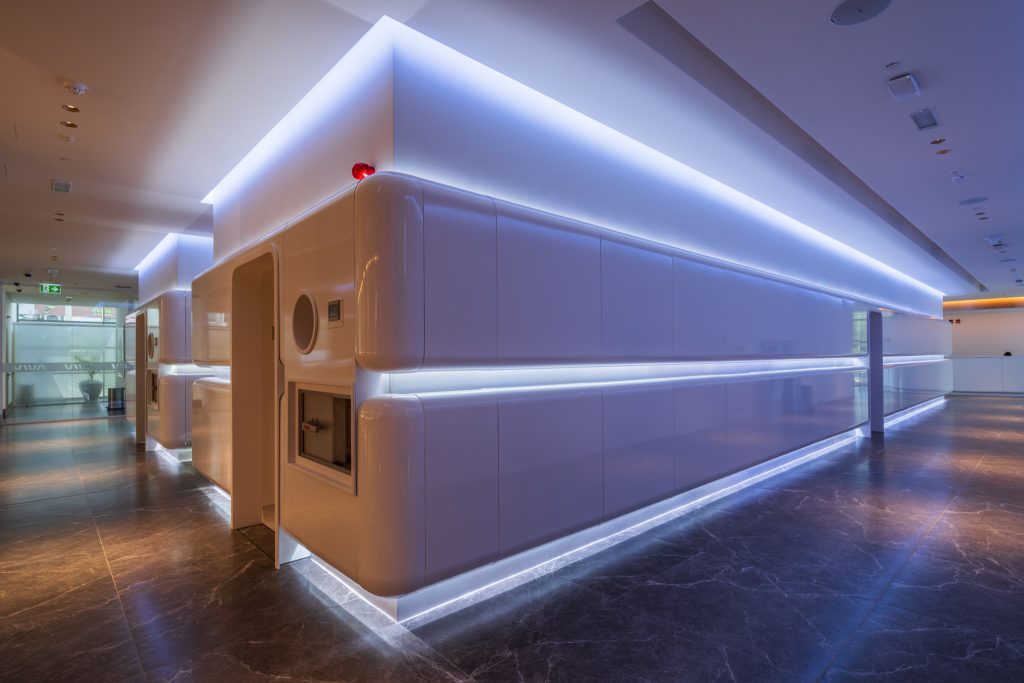
Our program is founded on Dr. Efrati’s research. Regaining functions and abilities more than six months post stroke requires working with a diverse medical team of physicians, nurses, and therapists. Aviv Clinics maximizes the expertise of this comprehensive team to offer a high-quality program that meets your needs.
The Aviv Medical Program can combine the following elements in a customized program to help treat the body and brain after a stroke:
- Hyperbaric oxygen therapy
- Cognitive training
- Physical training and therapy
- Dietary coaching
How It Works: A 3-Step Process
Aviv Clinics’ approach entails a three-step process:
- In-depth Medical Assessment: Our assessment process identifies how much of your brain tissue died from the stroke and how much of it is merely injured—these are areas we want to focus on to help regain your capabilities. We use the most advanced brain imaging tests (e.g., MRI and SPECT) suited to your needs. The Aviv team also conducts physical, cognitive, and neurological tests to evaluate your function in these areas and establish a baseline.
- Tailored Program: We use your results to develop a personalized therapy plan. This plan can include cognitive and physical training, dietary coaching, and HBOT sessions. A dedicated medical team will walk you through your therapy plan to maximize your body’s healing process.
- Post-assessment and Evaluation – Measurable Results: After your Aviv Medical Program treatments, you’ll receive a detailed report of your results, including any cognitive and physical changes. We repeat the tests from the initial assessment to measure your improvement and make recommendations for ongoing progress.
What Benefits Can Stroke Survivors Achieve with HBOT?
When combined with personalized cognitive, physical, and nutritional therapies, HBOT as a part of your stroke regimen may produce impressive outcomes, even years after a stroke, including the following results:
- Improved speech and ability to read/write
- Restored motor function, even with paresis
- Return to independence in performing many daily activities
Many of our clients report the most significant benefit is simply not being “a burden” on their loved ones.
Here’s how our program can impact the brain, body, and cells even years after a stroke.
Benefits for your brain*:
- Rehabilitation of injured brain tissue, restoring some impacted functions
- Increased blood flow in the parts of the brain that may have reduced blood flow due to the stroke
- New stem cells and blood vessels in the brain (angiogenesis)
- Improved psychomotor function (the combination of precise motor responses and cognitive problem-solving abilities)
- Triggered neuroplasticity (the brain’s ability to adapt/react in response to injury or disease) in injured parts of the brain
- Triggered neurogenesis (neuronal or nerve cell) regeneration that occurs in the brain.
- Improved overall quality of life
Benefits for your body*:
- Better physical performance: mobility, fitness, strength, coordination, balance, gait
- Improved NIHSS (neurological motor function score), ADL (activities of daily living score), and EQ-5D (quality of life score)
- Boosted power and stamina
- Reduced pain (strong anti-inflammatory effect)
- Improved sleep quality
Benefits for your cells*:
- Strengthened immune system
- Increase in stem cells (the building blocks of tissue rejuvenation) to multiply and migrate
- Quantitative and qualitative improvement in mitochondrial biogenesis (the power center of the cell)
*Individual patient results may vary.
“A 64-year-old woman suffered from left hemiparesis—or weakness in the left side of the body—due to ischemic stroke. She had the stroke two years before coming to our program. We significantly improved the blood flow throughout the brain. This person actually had improvement in their left-sided stroke symptoms two years after the stroke.” –Dr. Mohammad Elamir, MD, FACP
Speak with an Aviv Clinics team member to learn if you’re a candidate for our program.
Can You Biologically Reverse Your Age? Science Says It’s Possible
Yes! With specialized health programs and the right hyperbaric oxygen therapy (HBOT) protocol, it may be possible to reverse your biological age. How? It involves targeting the key biomarkers responsible for the body’s aging process. This quick guide dives into all the details.
Learn more about age-related decline and how Aviv Clinics can help.
What Are the Two Types of Age?
First, it helps to understand the two types of age:
- Chronological age or how many birthdays you have had
- Biological age or “the aging of our body’s functions”
Biological age refers to how old a person’s body and cells are. It’s often measured by evaluating a person’s various biological markers, such as:
- Epigenetic changes: Your behavior and environment can impact how your genes function.
- Telomeres: They protect the ends of chromosomes from deterioration. As we age, our telomeres naturally shorten.
- Senescent cells: Over time, these cells can accumulate in the body and prevent cells from growing. The increase in senescent cells contributes to age-associated medical conditions.
- Stem cell exhaustion: As we age, we produce a smaller amount of stem cells.
Additionally, biological age takes into account a person’s:
- Health
- Lifestyle choices
- Genetics
A healthy adult who has a chronological age of 60 years can be much younger in biological age if they have long and healthy telomeres and low levels of senescent cells — these can be achieved with the right lifestyle.
Researchers note “biological age is a better predictor of morbidity risk than chronological age.”

Does Hyperbaric Oxygen Therapy (HBOT) Reverse Aging?
A unique protocol of HBOT has been scientifically proven for reversing biological age.
Several studies illustrate HBOT, when administered in a specific protocol:
- Improves cognitive, physical, and psychological performance. These areas ultimately help promote healthspan and quality of life.
- May increase telomere length and encourage the “clearance of senescent cells.” This illustrates the potential HBOT has in slowing aging.
Keep in mind, the type of HBOT protocol is important. Not all HBOT programs are created equal. There are different types of oxygen chambers, and each provides a unique process. Reversing biological age has been scientifically proven only in multi-chamber suites, such as those at Aviv Clinics.
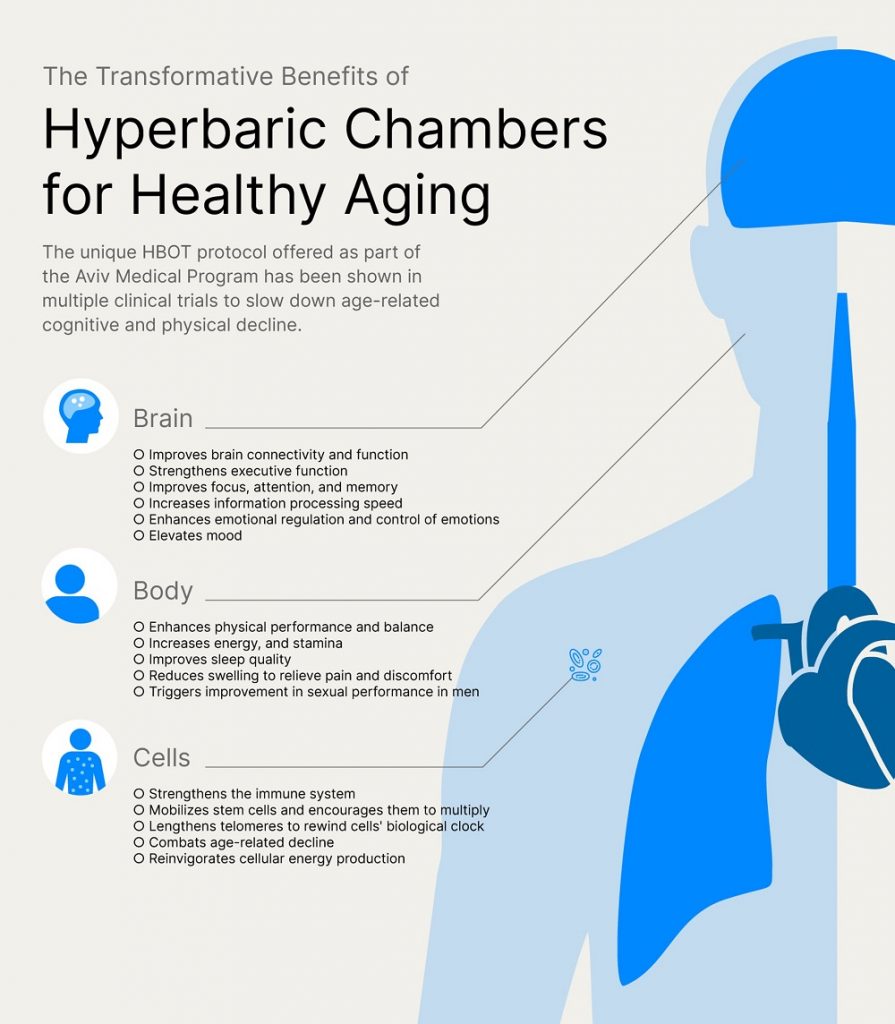
The Aviv Medical Program
The Aviv Medical Program offers a more robust and extensive treatment program compared to other clinics. The program has been clinically proven to reverse biological aging by:
- Lengthening telomeres
- Reducing senescent cells
- Promoting stem cell proliferation
- Targeting other areas of the brain and body to improve cognitive and physical performance
Our program consists of a treatment plan that begins with:
- In-depth review of health history
- Comprehensive physical and neurological exams
- Highly advanced brain imaging scans
- Neurological and neurocognitive tests
- Body composition analysis
- A detailed report of our assessment findings
Based on the results of the above, as well as your goals, needs, and symptoms, your customized medical program may include:
- Hyperbaric oxygen therapy (HBOT) provided in the specific protocol used in the above studies
- Cognitive training
- Physical training
- Dietary coaching
All of this is included in Aviv’s physician-designed program tailored to each client’s needs.

4 Ways the Aviv Medical Program and HBOT Can Promote Reverse Aging and Actionable Tips:
Let’s dive more into specifics and break down the four main ways the Aviv Hyperbaric protocol and program can help reverse aging. You’ll also find additional strategies to give your mind and body the holistic care they need for optimal performance.
Note: Speak to your doctor before you pursue any lifestyle changes.
- Cognitive Health
Common cognitive decline with age includes memory issues, language processing, and sleep disorders. Health experts note harnessing oxygen via HBOT along with cognitive training can help. Breathing in a pressurized environment with fluctuating oxygen levels can:
- Turbocharge the body’s self-healing mechanisms.
- Slow down the biological aging process.
Cognitive training inside the HBOT suite can be more effective as well. Aviv Clinics provides clients with a personalized cognitive training program that is performed on a tablet inside the HBOT suite/ chamber. Benefits include: improved memory, attention, focus, information process speed and executive function.
Additional Strategies for Optimal Cognitive Performance:
- Find healthy ways to cope with stress: If not managed, chronic stress can take a neurological toll, raising the risk of cognitive issues (e.g., memory and attention problems). Safeguard your cognitive health by engaging in healthy coping mechanisms for stress.
- Engage in brain games: Playing brain games can improve cognitive performance and enhance the overall quality of life. The fact that these games are fun is just the icing on the cake.
- Physical Health
Our bodies grow less efficient at channeling oxygen when we age. This is one of the reasons why we may feel “slower” in terms of mental and physical performance.
Research shows a specific HBOT protocol may:
- Optimize athletic performance by helping you elevate aerobic stamina, heal faster post-injury and more
- Reduce pain and inflammation.
Additional Strategies for Optimal Physical Performance:
- Exercise regularly: Commit to at least 30 minutes of exercise for a minimum of four days a week. Make sure your exercise regime involves cardio and strength training.
- Engage in intermittent fasting: Calorie restrictive diets most notably, intermittent fasting, have been shown to have a significant health benefit overweight reduction (or something that covers the same meaning)
- Mental Health
Mental health is another vital area to nourish with age. It is estimated that 20% of people age 55 or older experience some type of mental health concern. This may be attributed to life changes or events and injuries (e.g., environmental stressers, old or recurrent concussions or cardiovascular brain changes).
Evidence suggests Aviv’s proprietary HBOT plan can:
- Improve neuroplasticity, or the brain’s ability to adapt in response to an injury or disease. This means the brain can rewire itself after suffering an injury and strengthen its neural connections—key aspects to improving and maintaining cognitive health.
- Enhance brain functionality – regain brain functions lost due to age-related cognitive decline.
- Help PTSD survivors alleviate their symptoms.
Additional Strategies for Optimal Mental Performance:
- Try meditation: Meditation offers many brain health benefits, such as helping to cope with anxiety, depression, and overall mood. Following a simple daily practice will provide moments of groundedness and clarity.
- Lean on your support system: Reach out to family and friends for support. Human connection can be a lifeline to healing.
- Sexual Health
Various reports state that “frequent sex can improve…our general quality of life and may even extend our life by years.”
“Men tend to marry younger women, die sooner and care more about sex.” But until what age is a man sexually active? Experts say, “at age 55, men can expect another 15 years of sexual activity.” But this state isn’t universal—conditions like erectile dysfunction (ED) can minimize the quantity and quality of sexual health.
Luckily, studies illustrate HBOT may be a promising supportive or independent treatment for ED. It can encourage new blood vessel formation and improve blood flow, which can help improve symptoms of erectile function.
Additional Strategies for Optimal Sexual Performance:
- In addition to HBOT, take good care of your physical, mental, and cognitive health with the suggestions we’ve listed above.
- According to researchers, “Modifiable risk factors for ED include smoking, lack of physical activity, wrong diets, overweight or obesity, metabolic syndrome, and excessive alcohol consumption.”
- Therefore, following a healthy diet and exercise regime are key to overcoming ED and promoting better sexual activity in older adults.
Invest in HBOT to Reverse Your Age
Reversing your age may sound fantastical, but with the right medical team by your side, that goal may be possible. Learn more about the benefits of investing in your health and how Aviv Clinics can help.
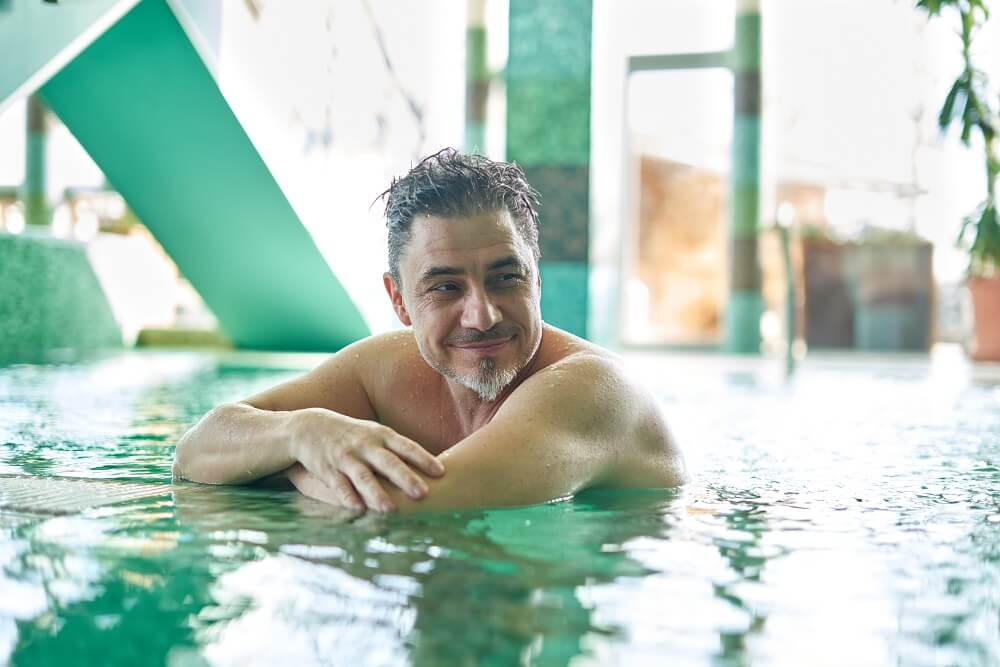
Ways to Enhance Your Post-Stroke Journey: 3 Brain Exercises to Consider
When we think of exercises, we often think about movement. As much as physical activity is essential to post-stroke health, mental exercises are just as important.
For post-stroke patients, brain exercises can be a critical component of their rehabilitation journey, as “cognitive impairment and memory loss are common after a stroke.”
The good news is the brain is a powerful organ that can learn at any age. Medical experts note, “the reality is that everyone has the capacity to develop new cells that can help enhance cognitive functions.” The more you will engage your brain – the better are the chances you will see cognitive improvement.
Brain exercises can unlock this potential. Below, we offer insights into three main types of brain exercises for stroke relief: games, apps, and lifestyle activities. We also discuss the training Aviv Clinic’s post-stroke program can offer, so don’t miss out.
1. Games for Stroke Patients
Games are not only fun, but they can also improve cognitive performance.

Puzzles
Games like crossword puzzles, Sudoku, and word searches are excellent activities to stimulate the brain.
The most impactful? Crossword puzzles. Researchers specify crossword puzzles are “superior to other brain games in improving memory.”
Let’s also not forget the accessibility crossword puzzles offer—you can find them anywhere online or in newspapers and easily take them on the go.
Board Games
Board games often require critical thinking and teamwork.
Playing board games—like Scrabble, Connect Four, and Battleship—stimulates brain areas that oversee memory formation and thought processes. Games do this by:
- Encouraging high-level thinking. Board games can improve brain skills like strategic thinking, logic, attention, memory, and comparison. Researchers report that “playing non-digital games may be a positive behavior in terms of reducing cognitive decline.”
- Enhancing creativity and self-confidence. The collective nature of board games can help post-stroke patients with creative problem solving while connecting with their friends and family.
Video Games
In a study where post-stroke patients participated in playing Wii Sports Resort—a collection of sports simulation mini-games:
- The group who played video games “achieved better results than the control group”
- Among attention, processing speed, and working memory, “the attention and processing speed improved” the most.
These results illustrate the potential video games have in supporting cognitive rehabilitation after a stroke. Like board games and puzzles, video games can offer the same stimulation the brain needs to enhance critical thinking and memory.
One study even notes that motor-sensor video games could offer physical benefits. When working with a therapist, the games “allow patients recovering from a stroke to improve their motor skills and affected arm movements.”

2. Devices and Apps for Stroke Patients
There are some specific devices and apps that provide access to speech and cognitive activities. Though most apps are not specifically for stroke patients, they can still help with neurological rehabilitation.
One tip is to look for ‘Psychomotor skills” apps that calibrate themselves to an individual’s motion range. These can be especially useful for stroke patients.
Here are examples of helpful devices and apps for stroke patients:
- BrainHQ is a cognitive training app. The app offers several games that help Aviv Clinics’ clients improve skills in areas—such as memory, attention, brain speed, and navigation—that stroke survivors may struggle with. You can even design your own program, choosing exercises and workouts that meet your personal interests.
- MindMaze has a helpful game-based digital therapy called MindMotion™ GO. It offers full-body motion capture, allowing patients to practice physical and cognitive exercises at the same time.
- Lumosity offers exercises for your mind with a fresh set of games daily to keep your brain consistently challenged. The app also provides reports that track your progress.
- VAST is a virtual reality rehabilitation system we use at Aviv Clinics. It offers the flexibility to work in any physiotherapy practice and helps our patients engage in moto-cognitive activities.
3. Lifestyle Activities for Stroke Patients
Here are some lifestyle activities for stroke patients that shake things up by offering more diverse, non-digital options that can create balance in your life.
Music
Listening to music offers an emotive experience that enhances mood and improves memory. Frequently, a specific song elicits certain memories or forms new ones.
Studies note that music therapy can be a good “motor function rehabilitation” method. Listening to music or singing songs can help “promote neural plasticity”—the ability of the nervous system to adjust itself—and improve “patients’ motor function.”
Have you been interested in learning to play a musical instrument? This activity may offer additional benefits, as “Listening to and performing music reactivates areas of the brain associated with memory, reasoning, speech, emotion, and reward.”
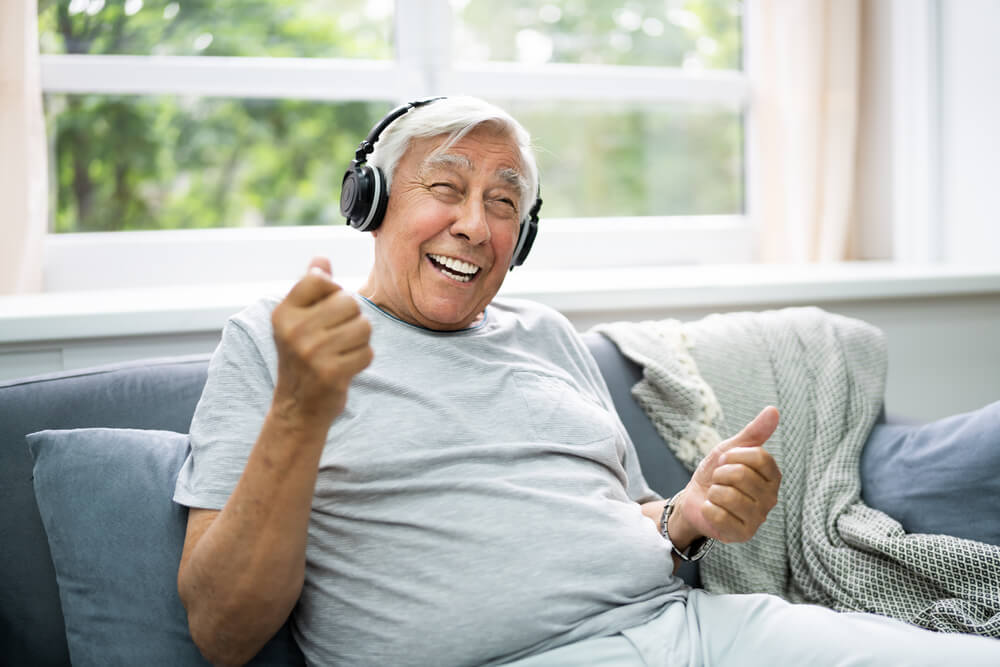
Photography
The Stroke Association recommends photography as a leisure activity. Take a walk around a nearby park or nature sanctuary and take some photos. Photography can be a therapeutic activity that offers a healthy and peaceful distraction. You’ll also get a chance to move your body while snapping pictures.
Aviv Clinics: Post-Stroke Program
The Aviv Medical Program offers a comprehensive post-stroke program targeted to those in the chronic post-stroke phase, typically six or more months after the incident. The Aviv Medical Program consists of a plan that can include the following:
- Hyperbaric oxygen therapy (HBOT)
- Cognitive training
- Physical training
- Dietary coaching
- In-depth review of health history
- Comprehensive physical exam
- Highly advanced brain imaging scans
- Neurological and neurocognitive tests
- Body composition analysis
- A detailed report of our assessment findings
- A post-program report of your improvements and recommendations for future progress
All components of this plan are included in a physician-designed program tailored to the needs and goals of each patient.
Cognitive Training Program
The cognitive training portion of the Aviv Medical Program is performed both inside and outside our hyperbaric oxygen suites. During HBOT sessions, your brain and body unlock their regenerative mechanisms. This helps you become more receptive to other forms of therapy.
As part of your treatment, you may also complete our unique cognitive training regime while exerting yourself physically on the cutting-edge h/p/cosmos medical treadmill. Research shows this combination of physical and cognitive effort maximizes the benefits of the Aviv Medical Program, taking your brain and body to the next level.
Find Hope with Aviv Clinics
Life after a stroke can be challenging. A stroke can suddenly strip away the capabilities we take for granted. Support, trust, and consistency are vital to getting back to optimal health. The medical team at Aviv Clinics offers all three elements while crafting a personalized rehabilitation plan specifically for you.
If you’ve tried the suggested brain exercises for stroke relief and other therapies but haven’t received the desired results, it’s time to seek the help of Aviv Clinics.
6 Future Trends in Healthcare for Patients
As healthcare rapidly evolves, patients must keep abreast of these shifts. Doing so activates your role in driving better health outcomes for yourself and your loved ones.
COVID-19 showed how technology can benefit patients during the pandemic. The medical community in Dubai is leveraging those takeaways to elevate patient care.
Additionally, individuals want to take more ownership of their health through the convenience of personalized, educational, and digital care.
Look out for these six future trends in healthcare throughout 2023 as more healthcare providers take steps to meet patient needs.
1. Remote Patient Monitoring (RPM)
COVID-19 showed how critical technology could benefit patients and elevate care. One way to achieve this has been through remote patient monitoring (RPM).
In 2022, RPM tools (e.g., wearable devices, pulse oximeters, blood glucose meters, and heart monitors) were valued at $53.6 billion. This value is projected to reach “USD 175.2 billion by 2027.”
When “74% of all deaths globally” are attributed to at least one chronic disease, a physician’s ability to remotely manage health conditions is key to preventing hospitalizations—remote patient monitoring (RPM) can reduce “the number of ER visits and hospitalizations.”

2. Health Literacy
With more doctors and patients remotely managing conditions, healthcare organizations are providing digital platforms that offer personalized educational experiences—experiences that address each patient’s health literacy level (in their preferred language and reading level).
As more providers anticipate higher patient volume (from individuals who delayed or avoided medical care during the pandemic and from the return of medical tourism), you’ll see more educational materials at each touchpoint of your care journey.
Don’t hesitate to discuss literacy levels with your doctor to ensure you feel confident and comfortable navigating your health journey.
3. Mindfulness Products
Wellness has taken center stage since 2020, with mindfulness coming to the forefront as an in-demand component:
- McKinsey reports “mindfulness has gained mainstream consumer acceptance relatively recently” among patients. Half of the survey respondents expressed that they wish more mindfulness products and services were available.
- Medical research indicates mindfulnesses exercises such as meditation can reduce “cognitive decline” and “perceived stress.”
Don’t be surprised to see more providers offering holistic care. For example, healthcare organizations may consider partnering with mindfulness apps or providing products that offer mental health benefits.
4. Data Analytics
Objective data is critical to seeing how you’re progressing and what additional steps you and your physician need to take.
More doctors are tracking and sharing with their patients the data that reports:
- Interaction with educational materials
- Treatment and communication gaps that need addressing for better outcomes
- Patient progress along a personalized treatment plan
- Actionable steps a patient takes to manage their health (remotely or in-clinic)
Data transparency helps the provider and the patient understand how a condition is progressing and what can be done to elevate treatment.
5. Advanced Imaging
The development of new technologies has brought on better ways to treat patients. One prime example is advanced imaging and neuroscience.
Advancements in radiography give medical professionals the tools to perform in-depth assessments of the brain upon a stroke. Advanced imaging may include:
- 3T MRI with DTI (diffusion tensor imaging)
- SPECT scan with new AI analysis methods
These imaging technologies help providers map a personalized recovery plan and track recovery in post-treatment assessments.
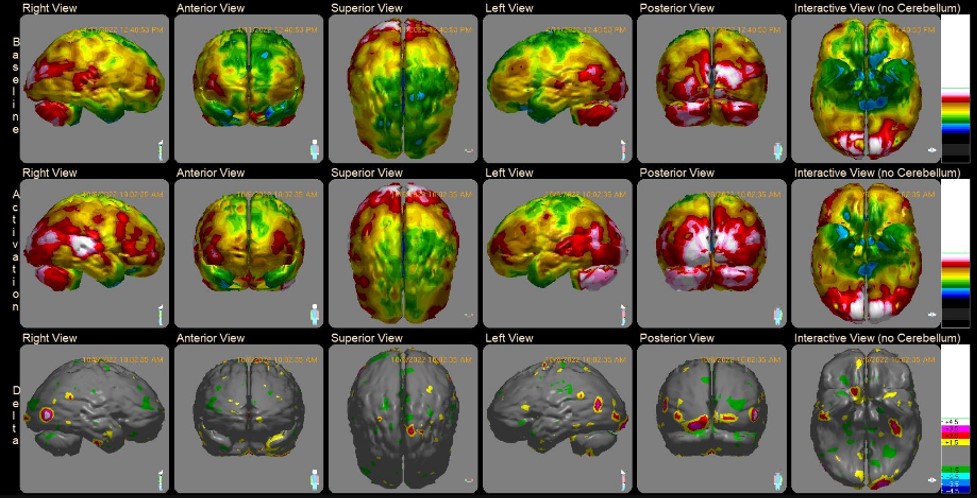
Comprehensive medical programs, such as the one at the Aviv Medical Program, rely on these advanced imaging and neuroscience tools to earn long-term results for stroke patients.
6. Hyperbaric Oxygen Therapy (HBOT)
Oxygen is the lifeblood of our health. As we age, body oxygen levels decrease, leading to infamous age-related decline. While most of these shifts are often thought to be irreversible, research says otherwise.
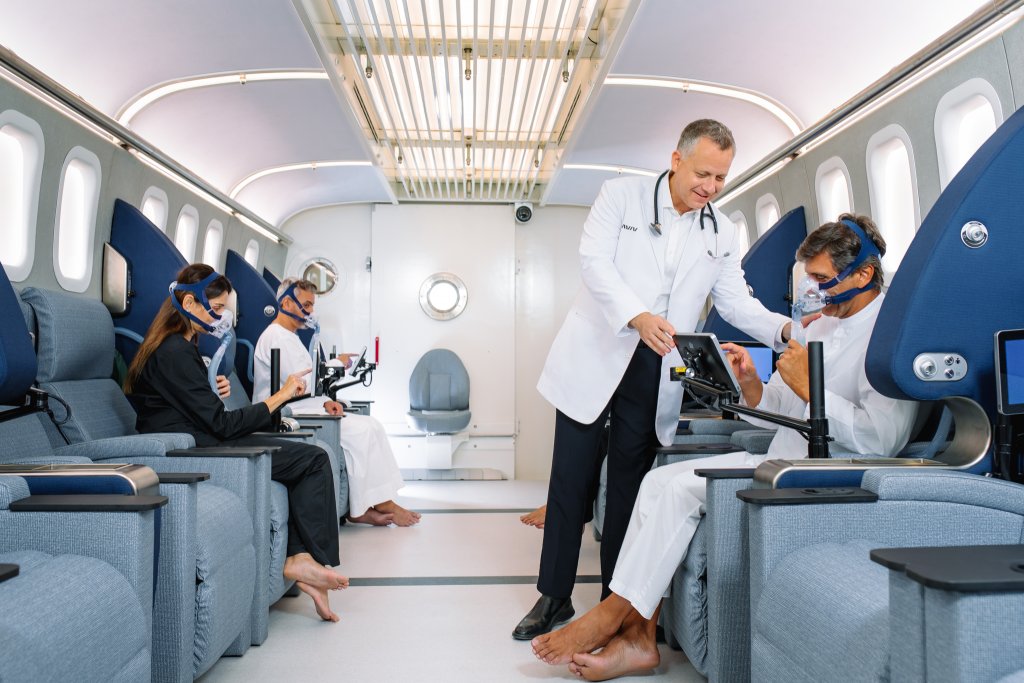
Studies indicate hyperbaric oxygen therapy (HBOT) can help:
- “Reverse biological aging” by slowing down the growth of cells and protein structures responsible for the aging process.
- “Reverse the main activators of Alzheimer’s disease”
At Aviv Clinics, our unique HBOT program entails fluctuating oxygen levels, which triggers the body’s self-regeneration capabilities.
“By treating vascular dysfunction, we’re mapping out the path toward Alzheimer’s prevention. More research is underway to further demonstrate how HBOT can improve cognitive function and become an influential tool in the imperative fight against the disease.” -Dr. Shai Efrati, Aviv Clinics
Learn More about Hyperbaric Oxygen Therapy
Aviv Clinics Dubai, brought to you by DP World, is here to elevate your healthcare journey, offering the world’s most advanced Hyperbaric Oxygen Program.
Our diverse community of patients has achieved significant health milestones thanks to a multidisciplinary approach that can include:
- In-depth review of health history
- Comprehensive physical exam
- Highly advanced MRI, DTI, and SPECT scans
- Neurological and neurocognitive tests
- Body composition analysis
- Cellular performance analysis
- A detailed report of our assessment findings
- Unique Hyperbaric oxygen therapy (HBOT) protocol
- Cognitive training
- Physical training
- Dietary coaching
- A post-treatment report of your improvements and recommendations for future progress
Our unique medical approach centers on research to provide high-quality care that produces lasting improvements in mental and physical performance. Areas of improvements include:
- Memory
- Concentration
- Information Processing Speed
- Emotional Health
- Stamina
- Energy
- Mobility
- Independence
- Quality of Life
- Sexual Performance (Men)
- Sleep
Benefits of our program also include:
- Stem cells proliferation– the building blocks of tissue rejuvenation – to multiply and migrate
- Lengthen the telomeres – the protective caps at the end of each strand of DNA
- Reduce senescent cells – known to contribute to many age-related diseases
- Increase mitochondrial function – the power plant in each of our cells
If you’ve experienced cognitive or physical decline due to aging or disease, we may be able to help.
To learn more about the Aviv Medical Program, contact the Aviv Clinic.
Treatment for Children and Adolescents with Traumatic Brain Injury (TBI) and PCS
Children and adolescents experiencing the effects of traumatic brain injury (TBI), post-concussion syndrome, and other brain performance problems have the opportunity for a better future with the right approach to treatment. Explore an effective treatment for TBI offered by Aviv Clinics Dubai:
Aviv Clinics Dubai Launches Highly Specialized Youth Medical Program to Assess and Treat TBI and Brain Performance Problems in Children and Adolescents
-
- The program uses Hyperbaric Oxygen Therapy (HBOT) to improve cognitive, emotional, and behavioral symptoms of youth suffering from specific brain-related issues.
-
- The new youth treatment program is backed by a first-of-its-kind study validating the Aviv HBOT protocol as an effective treatment for children suffering from persistent post-concussion syndrome.
-
- The youth program can also help improve the quality of life in children, aged between 8 to 15 years, suffering from cerebral palsy, Traumatic Brain Injury (TBI) and stroke.
- The youth program can also help improve the quality of life in children, aged between 8 to 15 years, suffering from cerebral palsy, Traumatic Brain Injury (TBI) and stroke.
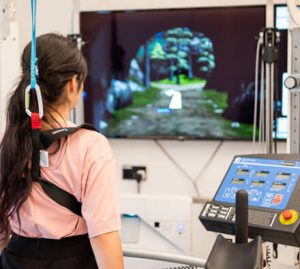
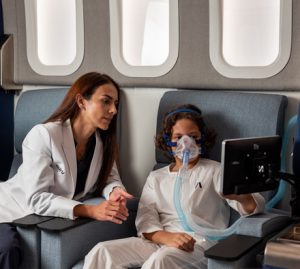
Aviv Clinics Dubai, a wholly-owned subsidiary of DP World, has opened a new wing at its JLT-based specialty brain health and performance center dedicated to a breakthrough Youth Medical Program that uses hyperbaric medicine to treat specific brain injuries in children and youth between the ages of 8 and 15.
The program specializes in the treatment of multiple disorders including cerebral palsy (a childhood motor disorder in childhood caused by brain injury due to lack of oxygen or blood supply), Traumatic Brain Injury (sudden damage to the brain caused by a blow or jolt to the head), and strokes (when the blood supply to part of the brain is cut off, because of a blockage or a blood vessel rupture).
The Aviv Youth Medical Program is the focus of a new study, published in Nature Scientific Reports, which shows the effectiveness of Hyperbaric treatment in healing damaged brain tissue and alleviating symptoms in children experiencing persistent post-concussion syndrome (PPCS), where concussion symptoms continue beyond the expected recovery period.
The study, conducted at the Sagol Center for Hyperbaric Medicine and Research at Shamir Medical Center, suggests that HBOT improves cognitive and behavioral function, as well as quality of life in pediatric patients suffering from PPCS, even years after receiving their traumatic injury.
The Aviv Youth Medical Program treatment starts with a comprehensive three-day medical, physiological, and mental assessment carried out by Aviv-certified medical staff including pediatricians, pediatric neuropsychologists, physical therapists, speech therapists, occupational therapists, and nurses. This includes the most advanced brain imaging tests suited to the child’s needs, such as perfusion MRI, and SPECT.
After analyzing the results of the in-depth assessment, children undergo HBOT sessions five days a week for 12 weeks – 60 consecutive one-hour sessions in total. Alongside the HBOT sessions, the patient will receive personalized cognitive and physical training designed to maximize the effects of the rehabilitation. At the end of the treatment, tests are repeated and compared with the results of the initial assessment.
“The diagnosis and treatment of post-concussion syndrome in children is a critical issue that physicians and researchers have struggled with, to the detriment of the children,” said Dr. Shai Efrati, Medical Director of the Sagol Center for Hyperbaric Medicine and Research and Shamir Medical Center, and Chair of Aviv Scientific’s Medical Advisory Board.
“For the first time, we have demonstrated an effective treatment for pediatric PPCS, whether the injury occurred six months or 10 years ago. This discovery and the launch of our new Youth Medical Program offers hope to thousands of families watching their children suffer from unrelenting symptoms.”
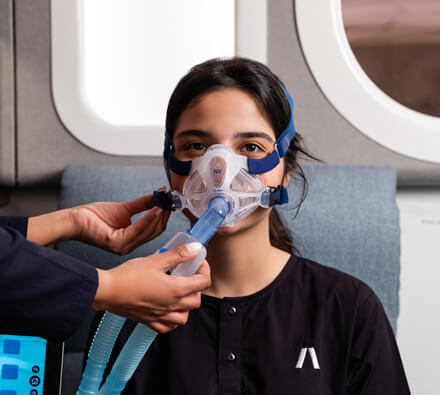
Upon completion of the study, researchers found that children treated with HBOT experienced a significant improvement in cognitive function, including the general cognitive score, memory, and executive function (ability to plan, prioritize tasks, and complete complex goal-directed behaviors), compared to the untreated children.
Other PPCS symptoms that improved include behavioral symptoms such as hyperactivity, and, perhaps most strikingly, the study revealed parallel structural brain changes, as seen on MRI, in the areas of the brain known to be affected by TBI leading to cognitive dysfunction and other symptoms of PPCS.
“Working in collaboration with DP World, we are able to bring to Dubai and the UAE medical community this highly specialized brain performance program grounded in more than 15 years of research and powered by truly state-of-the-art technology. As this study shows, we have the potential to give new hope to our young people and their families through the ability to diagnose and treat what can be debilitating symptoms of TBI, as well as other common brain disorders such as Cerebral Palsy and strokes. At the same time, we are able to contribute to advancing both Dubai’s and the UAE’s positions as global innovators and hubs for med tech and medical tourism,” said Mike Frayne, CEO of Aviv Clinics Dubai.
The same treatment protocol conducted during this study will be adopted in the youth wing at Aviv Clinics in Dubai. It will be administered under the same strict protocols, with additional comprehensive cognitive and physical training support for the various conditions and symptoms addressed by Aviv including concussion and TBI, and more. Aviv Clinic’s new Youth Medical Program is located in a dedicated wing of the 7,000-square-meter, state-of-the-art brain health and performance clinic in Dubai’s JLT.
If your child needs treatment for TBI symptoms or other brain conditions, we encourage you to learn more about the Youth Medical Program at Aviv Clinics Dubai by DP World.
The Key to Healthy Aging: Hyperbaric Oxygen Therapy vs Stem Cell Therapy
The transitional time we all experience after retirement age can feel tough, scary, depressing, and isolating. We begin to miss the “good old days” when performing at our peak was easy and rewarding. But please know that there is hope.
Science has advanced so much over the past decade and has delivered some promising therapies. Two of them have been gaining notable attention: stem cell therapy and hyperbaric oxygen therapy (HBOT). You may not be very familiar with either one, but they have enhanced human biology over the years.
Stem cells are one of the most important and impressive parts of the body. Every organ requires them to maintain optimal function and performance. To keep your body functioning, stem cells self-replicate, having “the remarkable potential to renew themselves” although they do so at a much higher rate when you’re young. As you age, stem cells have “restricted self-renewal potential” and gradually lose their self-renewal capabilities.
However, there’s a way to organically increase the number of stem cells in your body for the purpose of healing and healthy aging.
We’re not talking about a beauty regime that involves injecting stem cells into body parts for a more youthful appearance. We are talking about something far more effective at reverse aging—using a scientifically-backed hyperbaric oxygen therapy protocol to nurture your body’s own stem cell reproduction in your brain.
There’s no question — everyone can benefit from having their brain grow more stem cells. This guide lays out all the key facts on how to trigger your body to reproduce its own stem cells in Dubai. Aviv Clinics brought to you by DP World, walks you through the key details.
What Are Stem Cells?
Stem cells are the body’s internal repair system. When our cells go through normal wear and tear, injuries, or diseases, stem cells develop replacements for lost or damaged cells.
The incredible thing is that stem cells are like 3D printers of the body—they can develop into almost any type of cell in the body, from muscle to brain, and can repair and “recreate functional tissues.”
Our body is like a machine. In the beginning, when we are young, our machine works well—we have numerous stem cells. But as we age, the ability to do this starts to decline: Stem cells’ “renewal ability deteriorates and their ability to differentiate into the various cell types is altered.”
“As the amount and potency of stem cells start to decline…we start to lose tissue. This is what we call aging.” – Dr. Shai Efrati, MD, Director of Sagol Center for Hyperbaric Medicine and Research.
Given the powerful abilities of stem cells, researchers have studied them for decades to discover therapies for aging-associated disorders.
How Does Stem Cell Therapy Work?
Stem cell therapy renews damaged organs, tissues, or bodily functions. It’s an invasive therapy that physicians administer through:
- Injecting stem cells into the bloodstream
- Directly injecting healthy stem cells into a specific area of the body (e.g., the knee)
- Engraftment—when transplanted stem cells grow in the body and reproduce healthy blood cells
Uses of Stem Cell Therapy
Stem cell infusions and transplants are used for repairing cells damaged by chemotherapy or certain types of disease. Examples of these conditions include Leukemia and radiation injury.
Because of the“plasticity [and] self-renewal” abilities in stem cells, researchers note stem cell therapy “could delay or even reverse aging.” However, more studies need to be done to discover a specific stem cell treatment for reverse aging.
Limitations and Dangers of Stem Cell Therapy
Though stem cell therapy has made a lot of progress in health and wellness, there are limitations and potential risks to keep in mind:
- First and foremost, quality evidence is limited for the clinical improvements of stem cells therapy for most possible applications on humans.
- Currently, it is not possible to generate stem cells in large quantities. There isn’t a solution available to “generate large quantities of stem cells” in a laboratory. This makes stem cells difficult to obtain and purify.
- Stem cell therapy is limited to certain conditions.
- Stem cells therapy is an invasive procedure and therefore harbors the hazards of any invasive therapy, such as infections and the risk of significant local and system reactions, which could pose a significant health risk to the recipient.
While stem cell therapy has made its presence in Dubai, it is still very much in the research phase, which does limit its use as an effective therapy for age reversal.
Is HBOT Stem Cell Therapy?
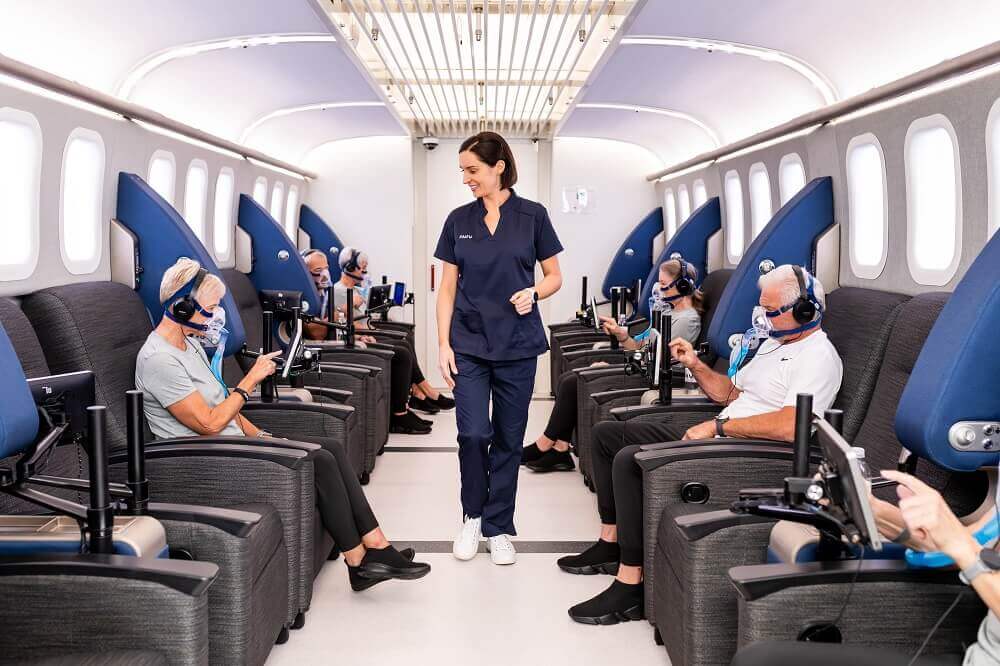
Many people ask this question, but no. Hyperbaric oxygen therapy (HBOT) is not stem cell therapy. Rather, HBOT is a method that triggers your body to multiply its own stem cells organically.
Here’s how that works:
- Oxygen is your brain’s superpower. Every bodily function depends on it, including the reproduction of stem cells.
- As we age, our bodies are less efficient at channeling oxygen to the areas we need it most (e.g., brain tissue). This is why we “slow down” over time, both mentally and physically. We’ve come to accept this as the norm and assume there’s nothing to be done about it.
Luckily, science says otherwise.
Nobel Prize-winning research reports that hypoxia is a strong stimulator for triggering stem cell proliferation and regeneration processes. These stem cells can enable our brains and bodies to regain their peak performance levels.
The Aviv Clinics treatment protocol utilizes the hyperoxic-hypoxic paradox in order to gain the benefits of hypoxia without having to expose patients to a true lack of oxygen and the risks involved.
Uses of Hyperbaric Oxygen Therapy
People have historically used hyperbaric oxygen therapy to treat a variety of conditions that involve oxygen-starved tissue. These include:
- Wound healing
- Delayed radiation injuries
- Carbon monoxide poisoning
The promising results of HBOT have prompted many physicians and scientists to dive further into research to identify possible impacts the therapy has on reverse aging and other health areas.
Landmark Research on a Hyperbaric Oxygen Unique Protocol
Founded on decades of research, it’s proven that unique hyperbaric oxygen fluctuations encourage the body to multiply its own stem cells. This specific protocol targets various health and wellness areas, such as:
- Reverse aging: Landmark research shows success using HBOT for reverse aging. Now, many doctors refer to HBOT as the scientific “Holy Grail.” The therapy has helped many individuals improve their cognitive and physical performance.
- Post-stroke rehabilitation: HBOT helps restore function of injured brain tissue in survivors.
- Traumatic brain injuries (TBIs): Studies illustrate HBOT can “induce neuroplasticity”—the brain’s ability to change and adapt. This potential can help repair damaged brain functions for those suffering from challenges after traumatic brain injuries (TBIs).
Limitations and Dangers of HBOT
- Not all HBOT administration is the same across clinics. Some use monoplace oxygen chambers, while others use multiplace chambers. Also, the way oxygen is administered is different across clinics as well. For example, most clinics administer oxygen at a steady level rather than use the oxygen fluctuations required to gain the benefits (based on Nobel-prize winning research).
- HBOT is an elective treatment. HBOT in the context of Healthy Aging is not covered by insurance.
- Potential side effects due to pressure changes may include ear and sinus discomfort. For some chronic conditions, special considerations may be needed.
The Aviv Medical Program’s Role in Stem Cell Proliferation
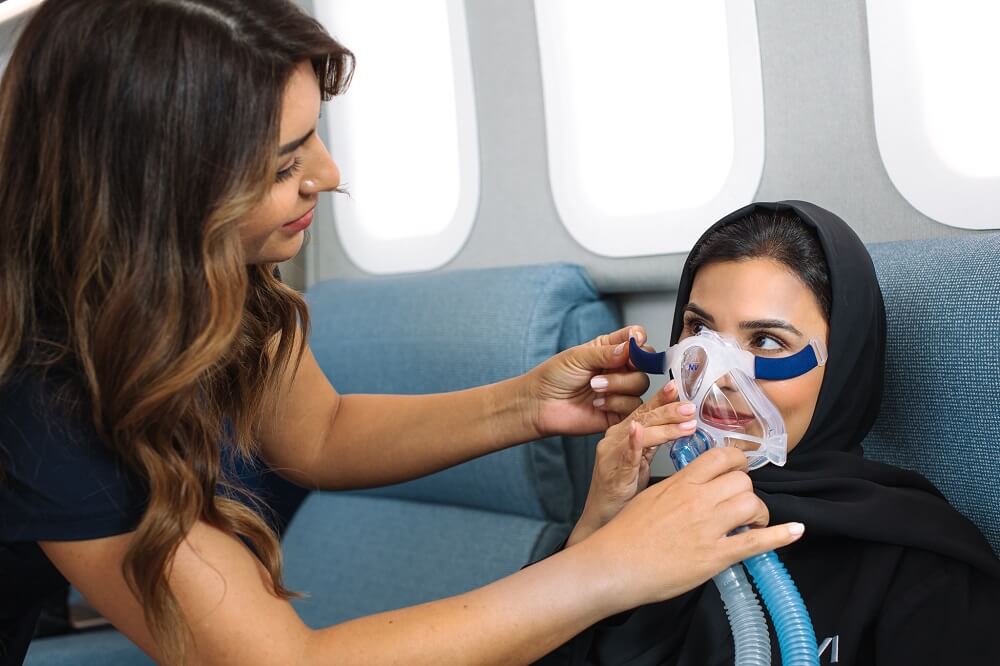
The Aviv Medical Program in Dubai prescribes HBOT to activate the body’s regeneration mechanisms — this helps regenerate more stem cells.
Stem cell growth in your brain helps:
- Grow new brain matter, increasing both the quantity and quality of healthy cells.
- Produce neuroplasticity, improving the quality of nerve fibers in the brain and other organs in the body.
- Boost your body’s own ability to heal wounds, including injured tissues resulting from a stroke or traumatic brain event.
These three developments ultimately drive new blood vessels to form, help restore injured tissues, and improve wound healing throughout the body.
Imagine your aging body feeling far better than it did years ago. Achieving higher cognition levels, improving athletic performance, and finally finding relief from conditions such as traumatic brain injuries, post-concussion syndrome, fibromyalgia and stroke is part of the program.
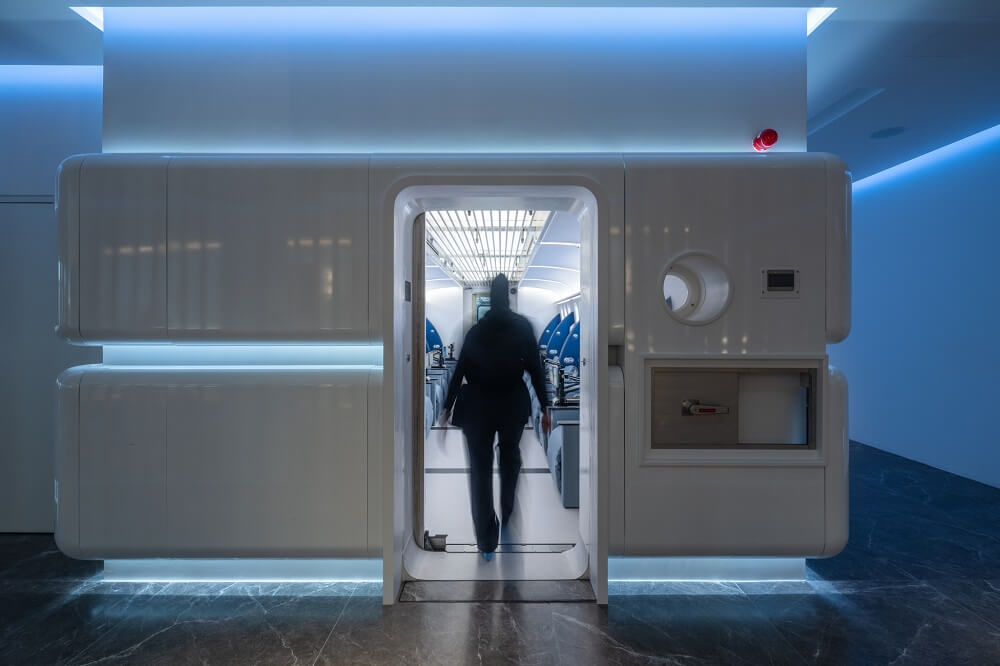
How Does it Work?
- You enter a technically-advanced room known as an Hyperbaric Oxygen (HBOT) suite and put on a mask to breathe 100% pure oxygen that is pressurized to above atmospheric levels. This increases oxygen levels in the body up to 20 times higher than normal, sending the boosted oxygen to deprived tissues in the brain and throughout the body.
- Aviv Clinics health professionals fluctuate the oxygen levels. These fluctuations trigger stem cells to multiply and new blood vessels to develop. While other clinics typically focus on injecting the body with types of stem cells, Aviv Clinics’s unique protocol fuels the body to reproduce stem cells organically.
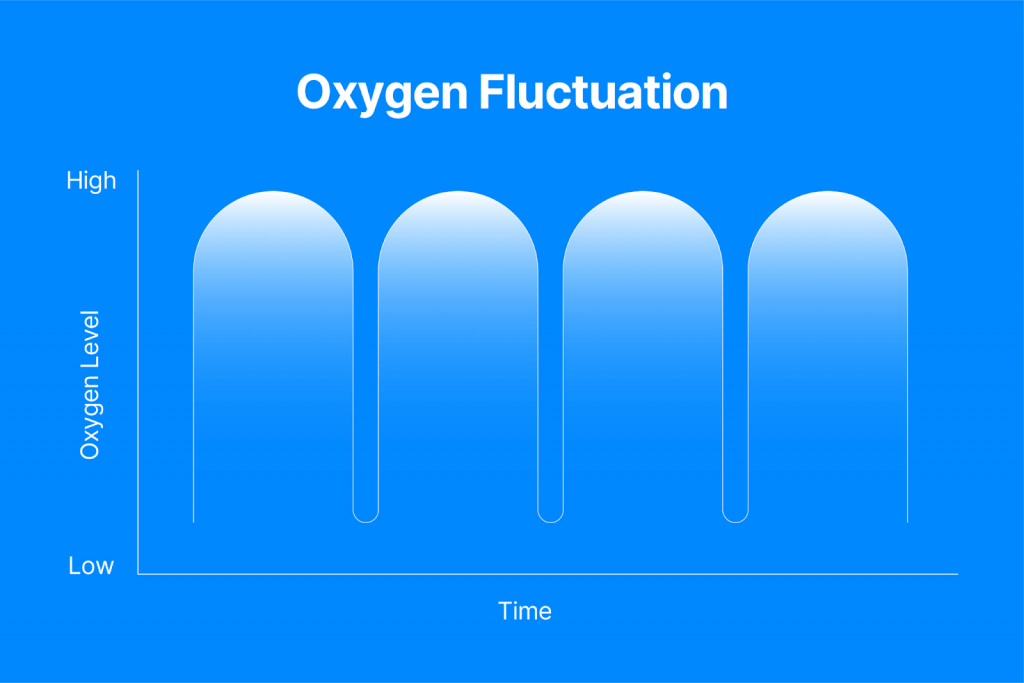
- Alongside other cognitive, physical, and nutritional training you undergo as an Aviv Clinics client, you’ll see significant improvements in your mental and physical performance. Your body’s natural healing and regeneration process will be turbocharged.
You’ll walk into the Aviv Clinic curious and perhaps a little apprehensive. You’ll leave confident and ready to live life to the fullest — no matter your age. Your work, physical activity, and emotional connection with those you love will come easier than it has in years.
Why Hyperbaric Oxygen Therapy at Aviv Clinics Dubai May Be a Better Alternative to Stem Cell Therapy
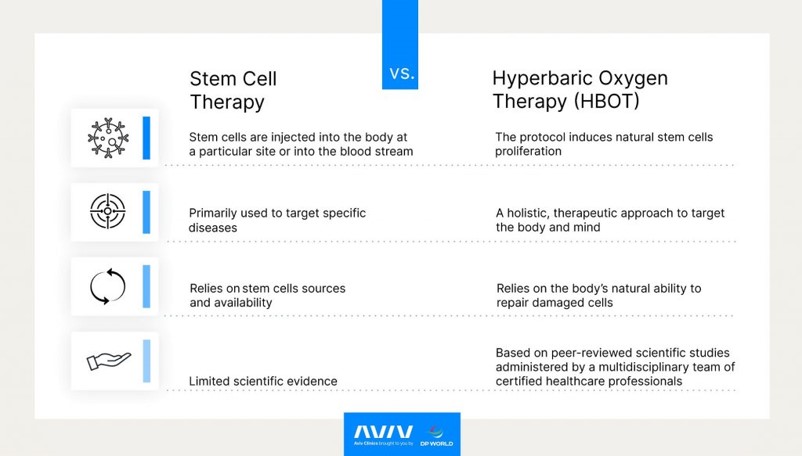
HBOT offers a safer, scientifically backed and a much more reliable approach to improving cognitive and physical performance (reverse aging), post-stroke rehabilitation, and traumatic brain injury.
Again, stem cell therapy currently does not have enough high quality data to know if it is an effective reverse aging treatment.
While stem cell therapy is invasive, HBOT is non-invasive, which means that there is no risk of acquiring infections or other side effects associated with invasive procedures. Individuals breathe in 100% oxygen, usually through a mask, and HBOT triggers the proliferation of your own stem cells.
The natural approach HBOT takes is why so many people have been able to experience long-term, systemic improvements throughout the entire human body. HBOT targets both the brain and body to improve the aging process and quality of life.
To explain further:
- Stem cell therapy is an invasive therapy (stem cells are injected into the body). HBOT is non-invasive. Aviv Clinics’ HBOT process is administered via an oxygen mask in a first class multi-person suite, and the oxygen fluctuations trigger the body’s ability to naturally proliferate its own stem cells.
- Aviv Clinics’ HBOT protocol is founded on decades of research and offers a holistic therapeutic approach to target the brain and body, enhancing overall human performance and aging. As far as stem cell therapy is concerned, high quality data is still not sufficient to fully understand the relevance of this treatment.
- While the success of stem cell therapy relies on stem cell sources and availability, HBOT at Aviv relies on the body’s natural ability to repair damaged cells. This offers a safer and more reliable option to boost performance and limit aging in the long run.
- HBOT at Aviv is based on peer-reviewed scientific studies.
Learn more about the science of hyperbaric oxygen therapy
3 Conditions Aviv Clinics Can Help Treat with Natural Stem Cell Proliferation
Many systems and functions in the brain and body can be improved when HBOT fluctuations trigger the body’s own ability to proliferate stem cells organically in the brain and other organs. Now we’ll touch on some of the conditions we help treat here in Dubai.
1. Anti-Aging
Landmark research shows it’s possible to use HBOT for reverse aging at the basic cellular-biological level. Now doctors use HBOT as the scientific “Holy Grail.”
Watch how Dr. Joe Maroon, Vice Chairman of the Department of Neurological Surgery at the University of Pittsburgh Medical Center, saw significant results in his physical and cognitive performance after HBOT.
2. Stroke
When a stroke occurs, part of the brain is cut off from its blood supply and oxygen. That’s when cells begin to die.
Up to 50% of post-stroke survivors suffer from motor dysfunction (balance, hand control, etc.) and/or brain impairment (memory loss, inability to focus or reason, etc.).
Fortunately, there is hope for stroke recovery with stem cell production using HBOT and other cognitive and physical therapies. This holistic treatment plan rejuvenates injured brain tissue and helps to restore function.
Watch the story of Keren Trabelsi (mother and business owner) on how getting treated at Aviv Clinics after suffering a stroke accelerated the recovery of her physical and cognitive abilities.
3. Brain Injury
Whether you’ve suffered from a traumatic brain injury (TBI) or know a loved one who has, you know how devastating the effects can be. The damage TBI can cause includes restricted blood flow to brain regions and impaired brain tissueA.
Studies illustrate HBOT can induce neuroplasticity in the brain and repair damaged brain functions, ultimately “improving brain function and quality of life.”
Watch Linden Perry’s story about using HBOT stem cell production for a brain injury to heal her lingering health conditions after sustaining a concussion as a goalkeeper on her soccer team.
Enhance Your Quality of Life with DP World’s Aviv Clinics Dubai
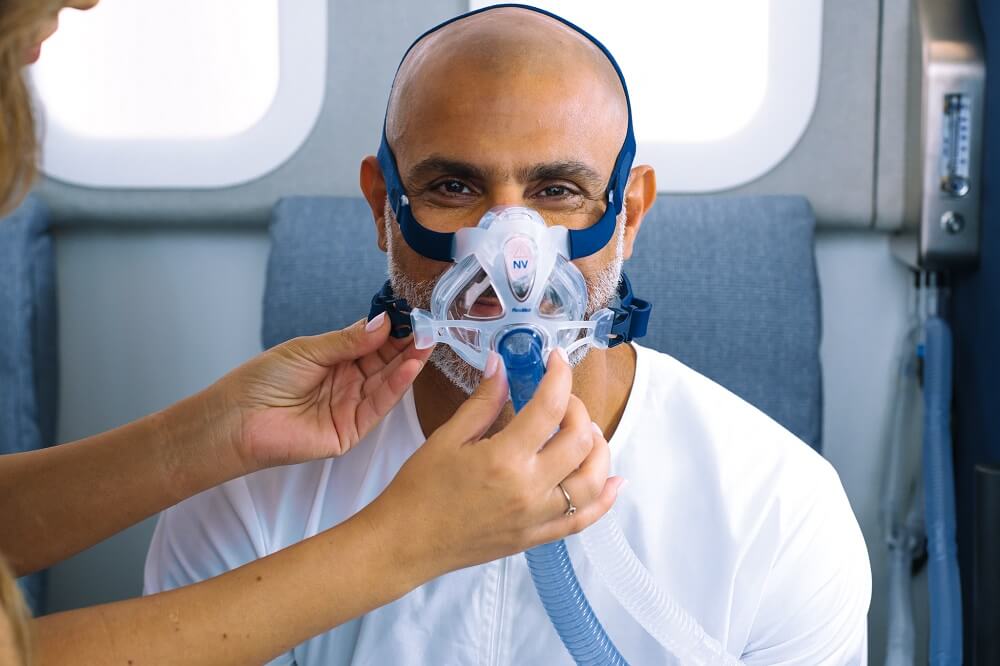
The Aviv Clinics brought to you by DP World in Dubai is a leader in enhancing physical and cognitive performance for the long term. We utilize highly-advanced HBOT protocols to help your body organically reproduce its own stem cells.
Whether you want to climb a mountain or simply get on the floor to play with your grandchildren, maintain the ability to perform complex work or have more connecting conversations with your loved ones, there’s help for you here. Be a part of this advanced scientific breakthrough for healing the mind and body from aging, stroke, and brain injury.
For a complete assessment to see if you are qualified for our treatment program of proliferating stem cells in Dubai, contact us today.
Schedule a Consultation to Learn More About Aviv Clinics
The unique HBOT protocol at Aviv Clinics is founded on decades of research. If you’re looking to reverse your biological age and naturally proliferate your body’s stem cells, the Dubai team is on your side. Schedule a free consultation with Aviv Clinic in Dubai to satisfy your curiosity about how hyperbaric oxygen therapy can benefit you!
5 Ways to Maintain Healthy Cognitive Ability as You Age
You want to stay sharp as you get older, we get it. Everyone hopes to age gracefully and enjoy their golden years full of new experiences and good memories. But as you know, this doesn’t always happen. Some people, as they grow in years, lose mental clarity and ability. Often this happens so gradually that it’s like watching hair grow—a loss of cognitive ability isn’t even noticed until it’s too late to do much about it.
But don’t worry, there is plenty of good news.
There are scientific, practical ways to help you maintain optimal brain health as you get older. As a health and industry leader in cognitive and physical performance, Aviv Clinics provides valuable, research-backed information to help you control your cognitive ability long into your twilight years.
5 Categories of Cognitive Skills You Want to Maintain
When we talk about cognitive ability, what we’re referring to is a set of seven skills that work together to help you in your daily life:
- Short-term memory
- Long-term memory
- Attention—sustained, selective, and divided
- Processing speed, including visual and auditory
- Logic and reasoning
Our brains can do brilliant and beautiful things! We simply need to nurture their natural abilities, so we can slow (or prevent) mental decline.
How to Improve Cognition – Follow Your Doctor’s Orders
Knowing how to improve cognitive skills is the first step toward achieving your goal of staying sharp and full of life for many years to come.
First, are you at risk of cognitive decline as you age?
- Do you have depression?
- Are you lacking sufficient mental activity?
- Are you avoiding physical exercise?
- Would your doctor consider you obese?
- Do you have high blood pressure?
- Have you been diagnosed with Type 2 diabetes?
- Are you a smoker?
To significantly lower your risk of cognitive decline, follow your doctor’s orders and incorporate these five must-have lifestyle adjustments to enhance your cognitive ability.
1. Sink Your Teeth into a Delicious Mediterranean Diet
Good nutrition goes a long way in maintaining a healthy brain and body. Studies show an association between high adherence to a Mediterranean diet and reduced risk of Alzheimer’s disease.
A Mediterranean diet entails:
Eating plenty of:
- Fruits and vegetables
- Fish and seafood
- Nuts and legumes
- Whole grains
- Unsaturated oils (extra-virgin olive oil and avocado oil)
Eating in moderation:
- Poultry
- Eggs
- Cheese
- Yogurt
Eating rarely:
- Red meat
- Refined grains
- Added sugar
- Highly processed foods
Read MIND Your Diet for Better Brain Health for some very interesting and informative guidance from an AVIV dietician, Kathryn Parker, RD, LD/N.
2. Increase Brain Metabolism through the Heart, Muscles, and Mind
Research links moderate exercise to increased brain metabolism and improved overall cognition. Exercise need not be too strenuous, but getting the heart rate up, building muscle, and pumping oxygen through your lungs and blood is very beneficial to your mental health. Physical activity can also improve heart conditions (one of the sources of cognitive decline).
Great examples of moderate physical activity include:
- Jogging or brisk walking, especially up an incline or in the sand
- Stretching morning and night
- Gardening and other household tasks
- Cycling either on a stationary bike or along a path
- Tai chi and yoga
- Playing outside with your children or grandchildren
If you’re an athlete who wants to up your game, Aviv will help you achieve your physical goals. Watch the stories of success.
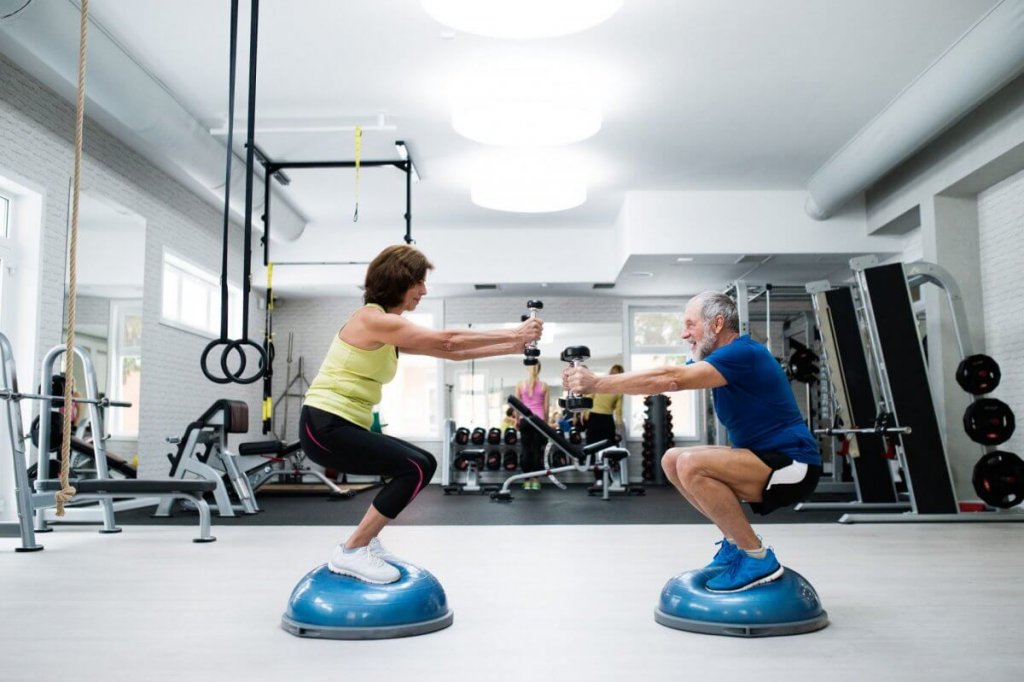
3. Don’t Let Stress Induce Deleterious Effects
If not managed, chronic stress often impairs memory retrieval and information acquisition, even inducing deleterious effects on brain structure and cognition. To help you bounce back from a stressful situation, consider:
- Engaging in physical activity
- Writing your thoughts in a journal
- Getting more sleep—it’s in the downtime that the brain flushes toxins out and cleans itself, allowing the repair you need from spikes of stress
- Doing relaxation techniques such as meditation or breathing exercises
4. Actively Build Neural Pathways
Identify hobbies or activities that keep your mind engaged. For example, one study discovered older adults who took up new body-connected activities that worked the brain in new ways experienced more memory improvement than those who did not.
Here are a few ideas when wondering how to improve your cognitive skills:
- Learn a new language and travel to where you can use it.
- Begin quilting or other detail-oriented crafts.
- Study photography, take pictures, edit them, and share.
- Try reflective therapy, like journaling, to revisit past negative memories and rewrite them more positively (“what I’ve learned” or “how it made me grow”).
- Invest (especially mentally and physically) into your child’s or grandchild’s hobby. Do they play lacrosse? Learn the rules of play and volunteer for the team. Do they have a knack for mathematics? Be their study buddy.
5. Stay in Touch with Your Trusted Physician
It’s essential to discuss cognitive decline with a trusted physician. The more you understand how your health can affect your brain function, the more you can do to safeguard your cognitive vitality. Discuss your options and advocate for yourself to get next-level care that will keep you healthier for the long term.
Fight Cognitive Decline with Aviv

Maintaining your overall health is beneficial for the longevity of your life. Fight cognitive decline with the Aviv Medical Program. Every person’s body and health are unique, and your medical treatment program should reflect that.
Aviv is the leader in brain performance—our program will keep your brain at its best. Our diverse team of medical professionals will provide the customized attention you need to maintain optimal cognitive health and reverse cognitive decline.
Contact us to learn how we can help.
